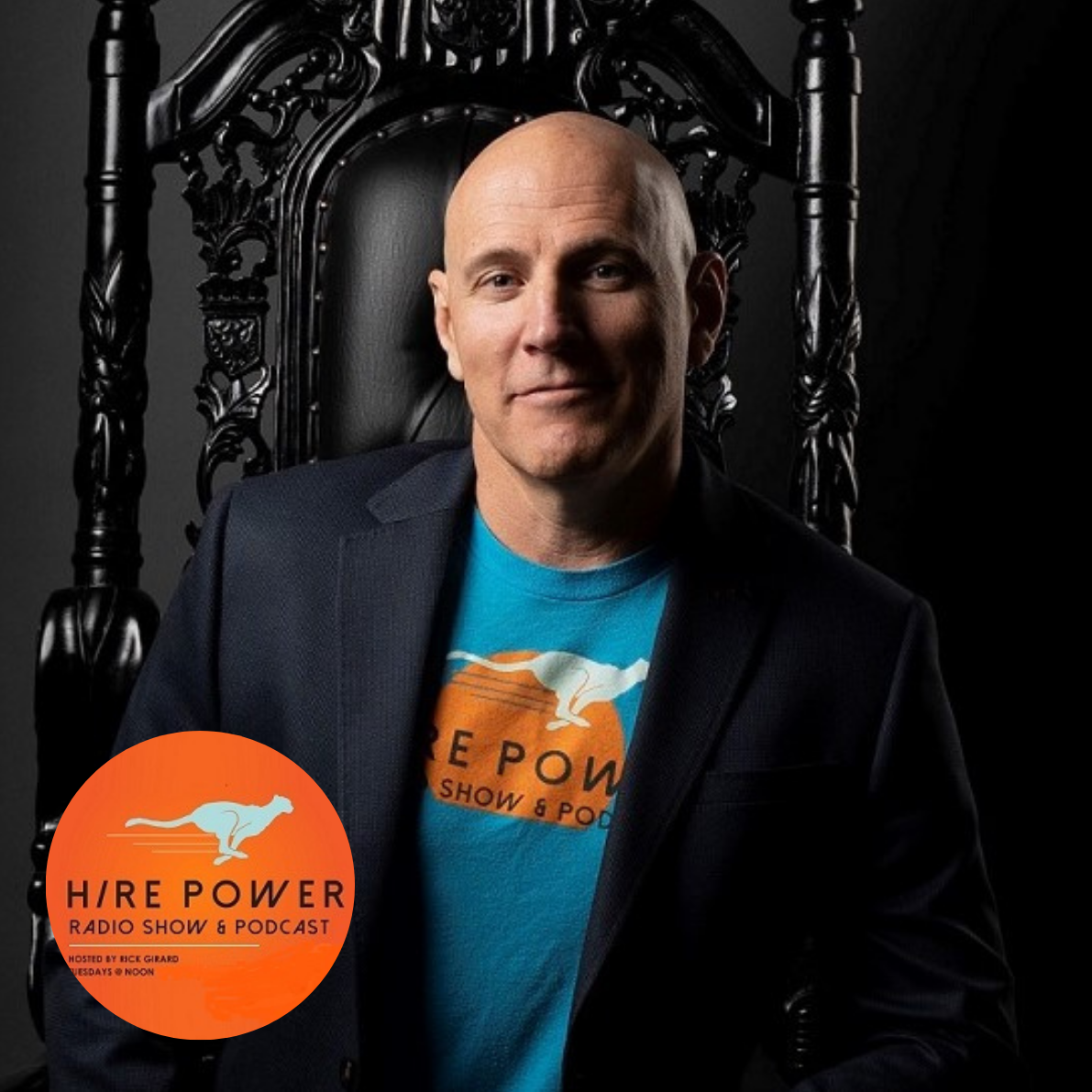
Welcome to the Hire Power Radio Show, where entrepreneurs and business leaders learn to hire with confidence and precision. Hosted by Rick Girard, this show is your go-to resource for avoiding costly hiring mistakes and securing the right talent to drive your company’s success. We dive deep into hiring challenges each week, featuring candid conversations with top-performing rebel entrepreneurs, disruptors, and industry experts. Join us every Tuesday at noon (PT) on LinkedIn Live for actionable insights, proven strategies, and the latest trends to give you the hiring edge. Subscribe now and join the movement to transform your hiring game. Do you have thoughts or questions? We’d love to hear from you!
Episodes
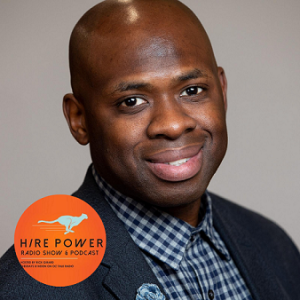
Thursday Aug 06, 2020
Removing Bias in the Hiring Process with Bruce Marable of Employee Cycle
Thursday Aug 06, 2020
Thursday Aug 06, 2020
“I want to work with really smart people and here is a list of schools that this person will have graduated from” said Lawrence, the CEO. “I do not want to interview anyone who has not come out of one of these schools”.
My gut reaction was to simply say, “no thanks” and exit the meeting. Afterall, this CEO was going to be difficult to work with.
My response back was simply “Confirmation Bias”
We favor information that confirms our world view and this helps us to reduce any cognitive discomfort that discounts our values and realities. As Entrepreneurs, we are more susceptible to this bias because we are so focused on the task at hand. This reduces our ability to objectively make decisions that are best for the business.
Lawrence laughed, grabbed the sheet of paper and threw it in the trash. “Ok find me smart people”!
The truth is the strongest people often surface in the most unexpected ways and your bias clouds your vision of the truth!
Our guest today: Bruce Marable, Co-founder & CEO of Employee Cycle, the all-in-one People Dashboard
Bruce is a Philly-based serial tech startup founder. When Bruce is not helping HR leaders better use data to make smarter workforce decisions, he is making music playlists on Spotify, taking self-care at the boxing gym, or hunting for the best bread pudding around town.
Today we discuss:
- Why Bias needs to be eliminated from your hiring process
- How to deliver an unbiased, evidence based interview
Challenge today?
According to Wikipedia, Bias is defined as a disproportionate weight in favor of or against an idea or thing, usually in a way that is closed-minded, prejudicial, or unfair.
We all have bias. It is important to eliminate it for one simple reason… Your company’s success
Why is bias elimination important to the company?
- More diverse companies succeed
- More revenue
- Higher productivity
- Cannot properly market to diverse groups of people/customers
- Totally different backgrounds bring different ideas
- More diverse individuals create more self awareness, well rounded thought process
- Disabilities
- Sexual orientation
- Ethnicity
- Ageism
- Re entering workforce
- Incarcerated
- Parenting
Rick’s Nuggets
- Innate Biases
- Overconfidence: Subjective confidence in ideas or decisions
- Illusion of control: overestimate ability to control situation or outcome
- Anchoring/Adjustment: past experience predicts plans for future
- Confirmation: preexisting beliefs- devalue contradictory information
- Cognitive tunnel vision
- Curse of Knowledge : experts assume similar content understanding in others
- Optimism: See the positive outcomes… delusional optimism
How do we solve the bias issue?
Mindset
- Open to People who are different
- Everyone is on equal footing
- Allow people come in as being perceived as qualified
- Vs. unqualified
- Reinforce that they are qualified
- Eliminate your assumptions- college degree
Actions
- Recruit from a diverse pool of job candidates
- Remove all language in job descriptions that may have bias.
- Standardize the interview questions.
- Perform the same due diligence on all candidates whether that candidate is a referral or not
- Give all candidates the same level of respect
- Blind the resume process
- Remove bias from likability
Rick’s Nuggets
- Customer experience mindset - applicants are your customers
- More difficult to say No than yes
- Conduct a qualifying call with most
- Interview questions
- Pre-determined and assigned to the individual interviewer according to the order in which they participate
- Must gather evidence to support the decision either way
- Feedback & closure
Key Takeaways:
- Acknowledge confirmation bias.
- Review the language in your job descriptions
- Standardize your interview questions
Guest Contact:
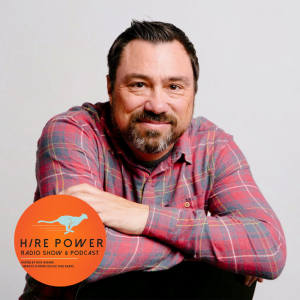
Friday Jul 31, 2020
Friday Jul 31, 2020
Key Points for Episode:
Timeline for Video Interviews - 72 hours
1- 45 minutes
2- 45 minutes
3- 45 minutes
4- 45 - 60 minutes
Decision - 24 hours from Final Interview
You must have your questions pre-written and assigned to the individual Interviewer
Questions designed to gain evidence of cultural alignment
** DO NOT just pick random behavioral questions!
They must have purpose and be tied to your company values!
Behavioral Questions
Follow up each question with the “How & What”
The purpose of each interview is to get to the “truth” of who this person is and how they align with company core values. Our goal with each question is to find hard evidence one way or the other. Past performance is a key indicator of future performance. We are going granular to understand the core of who this person is to fill your gut with accurate information to make the correct decision.
The Behavioral Interview: The simplest way to learn the behavioral model is to use STAR methodology. Let each interviewee outline the Situation & Task first. This is just the background of the story that you need to know to make the story make sense. Clear context! Look for difficulty, complexity or size of the challenge. What was the person trying to accomplish and why?
Approach: This is where we focus on the actions taken to address the issue, complete a task, solve a problem or improve the situation. We focus on the WHY here!
Focus in on this area the most and poke holes in the answers.
Each answer needs to be tested and must be followed up with why.
Look for Key details and explore them!
Why did you take that approach?
Why was that important?
Why did that work?
Results: What is the positive outcome for the story? What were the issues? Where did they fail? We are looking for tangible, supported evidence.
Video Interviews (Same Day Ideal)
- Ideal to line up back to back
- Schedule back to back or split them up 2/2 or 3/1
- Build a knockout question for each interviewer
Interview 1 - Cultural Value Alignment I
Interview 2 - Skills Screen
- Live working session to evaluate skills/communication
Interview 3 - Cultural Value Alignment II (optional) 24 hours from interview 2
Final Interview - Cultural Confirmation III & Offer preparation (Decision Maker)
Decision / Offer (24 hours max)
- Best to give immediate feedback
- Time kills hires, be decisive
Role Play
Interview Questions
Walk me through the steps you took to prepare for your last project / client presentation (preparation)
- What made those steps the most efficient?
- How did you do it specifically?
- Timeline set?
- Potential Challenges identified and how were they prioritized for consideration?
- What were the things you missed?
- What was the result?
- Why was this important to you?
**Give me an example of something you tried that failed miserably (keep light & fun)
(innovate without fear)
- What were the circumstances that justified the risk
- How was it implemented?
- What was the potential upside if it worked?
- What was missing?
- What would you have done differently?
- Why did it fail?
- What did you learn?
Tell me about a time when it was necessary to admit to others that you had made a mistake. (accountability)
- What was the specific mistake
- How did you identify the mistake?
- How did you handle it?
- Why did you choose that particular approach?
- What was the lesson learned?
- What did you do differently going forward?
Tell me about the last project you worked on where you were major time constraints (own it/quality effort)
- What steps did you take to ensure quality?
- What shortcuts were taken?
- What mistakes were made
- How did the client receive the work?

Thursday Jul 23, 2020
Thursday Jul 23, 2020
We are now remote. And we are learning so much about what it takes to keep your people engaged and productive. The balance between communication and micromanagement is often the Biggest challenge.
Here’s what we’ve learned: Consistent communication with ultra flexibility is working. Encouragement to take care of yourself first: ie: a walk, bike ride or step away is increasing productivity. Virtual happy hours are helping to forge team comradery.
Our guests today: Michael Houlihan & Bonnie Harvey, Founders of the world's top wine brand, Barefoot Wines
Beginning with virtually no money and no wine industry experience, they employed innovative ideas to overcome obstacles, create new markets and forge strategic alliances. Michael & Bonnie pioneered Worthy Cause Marketing and performance-based compensation. They built an internationally bestselling brand and as a result were acquired by E&J Gallo. Today, they offer their Guiding Principles for Success (GPS) & Shelf Smarts courses to help consumer product brand builders achieve success by maximizing the value of their human resources.
Today we are discussing:
- Virtual challenges today
- How to build company culture to an off premise workforce
Off Premise challenge today?
- Disengagement
- Not routine
- Physical commitment
- Daily encouragement
Why is this important to the company?
Two biggest hidden costs in every business!
- Reduce turnover
- Increase engagement
Good people transform to great people through growth
- Improve skill sets & relationships
- Allow people to do the work they like to do and not do. Allow them to create their own roles.
Rick’s Nuggets
- Accountability & Productivity
- Remote causes you to really put your business under the microscope
- Cost of a Bad hire is 30% of individuals earnings (US Dept of Labor)
- Does not include Morale & Productivity loss costs
How do we do it?
Find good people & build great people *****
- Keep people from being isolated (Team based)
- Culture of permission - make mistakes right. Don't hide mistakes.
Hiring tactics?
Overkilling Orientation
- Over educate
- Money map
- About understanding how the money flows to get to your paycheck
- 2 division company
- Getting into the cause & effect of the business
- Sales & Sales support
Include people in the solutions
- Everyone asked to contribute their ideas
- Footsteps to the wine in stores from the receptionist! (recognition)
- Throw problems out on the table and allow people to contribute
- Promote the idea that everyone has a voice
Rick’s Nuggets
- Finding good people requires work & a lot of conversations
- Creative ways to encourage engagement
- Virtual happy hour
Key Takeaways:
- You have a responsibility to improve your hires. Find their talents and expand upon them
- All companies have 2 divisions- sales & sales support
- All salaries start from the community not from the company!
Find Bonnie & Michael here:
Business Audio Theatre Linkedin
Websites: www.thebarefootspirit.com & www.consumerbrandbuilders.com
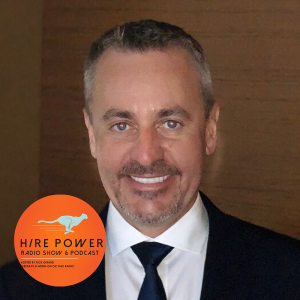
Thursday Jul 16, 2020
Thursday Jul 16, 2020
High performing individuals come in every flavor. They can not be identified by looking at a resume! They can only be discovered by understanding who the person is, the values they hold dear and the track record of the impact they have made in the past. Every day, your company loses money when you allow personal bias to influence your hiring decisions without proper evidence. Quite often, the strongest hire is not the person you envisioned for the role.
Our guest today: Kelly Robinson, CEO of RedDotMedia.
He founded Broadbean.com Inc 2001, which was acquired by CareerBuilder in 2014. Now he lead RedDot Media, recruitment advertising agency with a particular skill in programmatic advertising campaigns. Kelly has spent the last 25 years in recruitment and recruitment technology, during which time he has grown, integrated, bought, and sold businesses in both the UK and US.
Today we are discussing:
- Why you need to consider hiring people over 45+
- How to value wisdom & hire modern elders
Why don’t employers hire older people?
- The person they are hiring probably has more experience than they do.
- Oh, why would he want to work for me,
- They have done my job for 20 years!
- They don’t have the right degree.
- Younger workers are better because:
- They have more energy.
- They're more tech savvy.
- They're more willing to give discretionary effort.
- They'll work for us for the next 30 years.
- They have less health problems.
The reality is younger workers have just as many problems as older workers.
- Older workers are better because:
- They don't have kids pulling them constantly off their game (Uh oh! Parent bias!)
- While possibly not as tech savvy, they have experience in getting things done in different ways and they won't panic when the internet goes down for 15 minutes.
- They grew up in a time when work life balance meant you worked until the job was done.
- They're willing to by loyal to you for the next 7-10 years, which is more loyalty than you'll get from anyone else you hire.
- Older workers statistically don't miss work more than younger workers.
- In the next few years, 35% of our workforce will be 50 or older.
- And 8% of them—about 13 million workers—will be 65 or older.
- It’s hard to finance a 30-year retirement with a 40-year career - Chip Conley (Airbnb 52)
The average duration of unemployment for older job seekers has dropped sharply since 2012 (though still long); it’s down from roughly 50 weeks to 34 weeks for job hunters age 55 to 64. In other words, it now typically takes about seven to eight months to find a job if you’re over 55.
About 29% of job seekers 55+ are considered long-term unemployed (looking for work for 27 weeks or more); while that’s still high, it’s down dramatically from roughly 45% in 2014
AARP surveyed 3,900 people age 45 and older, 61% said they’ve personally seen or experienced age discrimination. Among those who’ve applied for a job in the past two years, 44% were asked for potentially job-losing age-related information such as birth dates and graduation years It’s almost an acceptable bias.
Why is this important to your company?
- Older workers may be better because:
- They don't have kids pulling them constantly off their game (Uh oh! Parent bias!)
- While possibly not as tech savvy, they have experience in getting things done in different ways and they won't panic when the internet goes down for 15 minutes.
- They grew up in a time when work life balance meant you worked until the job was done.
- They're willing to by loyal to you for the next 7-10 years, which is more loyalty than you'll get from anyone else you hire.
- We all miss work for stuff. Older workers statistically don't miss work more than younger workers.
The fastest-growing age demographic of employees in the workplace is 65 and older, which has experienced a 35% jump in numbers over the past half-decade. In the next few years, 35% of our workforce will be 50 or older. And 8% of them—about 13 million workers—will be 65 or older.
- According the U.S. Bureau of Labor and Statistics, 22.2 percent of the workforce is 55 years old and over!
- Research from the National Council on Aging has shown that modern elders have lower absentee and turnover rates than younger workers.
- Ultimately, age will be less of a factor. The Bureau of Labor Statistics projects that those ages 65 and over will experience the fastest rates of labor force growth by 2024.
- Many people who reach retirement age now are often healthy enough to run marathons, build houses
Rick’s Nuggets
- You can NOT tell if someone is good for your company via a resume! Anyone who says otherwise is delusional
- Recruiters/hiring managers filter people out
- Ageism
- Overqualified
- Too expensive from a benefits perspective
- Not technically aware- can't learn new skills (stereotyping!)
- Not the right educational experience
- Not a cultural fit (fitting in with people in their 20’s)
How do we do it?
- Start valuing wisdom
- Appreciate that you have no choice
- Promote diversity & inclusion… which includes AGE
- D&I increases innovation
- Productivity
- Demand that those responsible for recruiting Talk to people everyone who is reasonably close
- Eliminate educational barriers
- Anyone over 5 years experience, ignore the educational background
- Develop a phone screen process to gather evidence of success
- Judge viability by gathering accurate data
- Take notes
Guest Contact:
Email: kelly@reddotmedia.co
Twitter: @KellyJRobinson

Thursday Jul 09, 2020
Thursday Jul 09, 2020
Not having a clearly defined corporate culture document is a recipe for failure. Why? The culture document is a business plan for how your people are expected to behave, interact and resolve conflict. It is your saving grace when things go sideways! You must provide a clear and accurate picture to everyone you interview about the good, the bad and the ugly of the organization and the expectations of behaviors that result in success in their role.
Our guest today: Jeff Wald, CoFounder & President of WorkMarket
Jeff Wald is the Founder of Work Market, an enterprise software platform that enables companies to manage freelancers (recently acquired by ADP). He also founded several other technology companies, including Spinback, a social sharing platform (purchased by salesforce.com).
Jeff is an active angel investor and startup advisor, as well as serving on numerous public and private Boards of Directors. He also formerly served as an officer in the Auxiliary Unit of the New York Police Department. Jeff is the author of The Birthday Rules and The End of Jobs: The Rise of On-Demand Workers and Agile Corporations. Jeff frequently speaks at conferences and in media on startups and labor issues. He is an expert at building cultures that thrive.
Today we are discussing:
- Why it is critical to have a culture document
- The three steps to building your own culture doc
Why does a company need to have a culture document?
- Not very clear about the culture of the company
- First stages you hire the people that you know
- First months/years are the most difficult
- Very difficult to make sure you work well together
- When you exhaust your talent pool/first level network
- Then you branch out
Do people really understand the nature of being at a startup?
- Terrible hire / fit amazing person, really a vanity hire
- Understand how to be resource constrained
- Amazing person, disastrous fit
Why is this important to the company
- Resource allocation problem
- Few dollars, time
- End up giving a longer rope so the failure impact is that much greater
- Cost the company Millions of dollars- spending power, budget
How do we do it?
- You should not hire quick at the executive level
- They need time to succeed
Creating a culture Document
- Start with your values
- 6-8 core values of the company
- Different to everyone
- Be clear with what it is you believe
- Who you are (mission statement), where you are going (North Star) & why you are there (purpose)
- Needs to be super clear to EVERYONE in the organization (repeat it again and again...when people start complaining about hearing it too often, you are halfway there!)
- Behaviors & Policies
- Behaviors to support the values
- How we run our business
- How you hold meetings, how you promote, how you do business with clients, how you communicate, how you make decisions, your social events, etc., all have to support your values, otherwise what's the point of having values?
- People
- What are the behaviors that everyone at the company should strive for? Do we want people constantly learning and growing, or just doing their job well and going home? Are they questioning things, or just rowing when told to row? How do they disagree with a decision?
- What do we expect from our managers? Are the efficiency drivers or coaches? Are they transparent? How do they give feedback?
Key Takeaways:
- A culture document brings clarity to you and your team
- Repeat it again and again, because your team has to know it
- Use the document as hiring and promotion guide
Guest Contacts:
Book: The End of Jobs: The Rise of On-Demand Workers and Agile Corporations (Amazon)
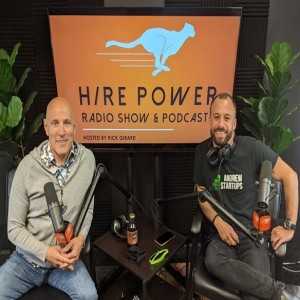
Thursday Jul 02, 2020
Thursday Jul 02, 2020
Marketing and hiring are far too often major failure points because they are started too late. The right time to start marketing is before you launch your product. Just as the right time to hire is before you feel the pain of needing the work to be done. It is never too soon to to proactively start your marketing or hiring process. The key to not failing is having the structure in place before you feel the pain!
Our guest today: Andrew Miller, CEO of GrowthExpertz
Andrew is a Startup Marketer who's been traveling the world working with early-stage companies. After driving growth for 3 multimillion-dollar startup exits, including a 500startups project in San Francisco, he founded GrowthExpertz.
Andrew's specialty lies in helping companies scale efficiently in the early-stages with both growth coaching and remote consultancy. He’s written for INC magazine, StartupGrind, and StartupNation. Andrew is also a prolific #DigitalNomad who in the last decade has visited, lived, and worked from over 70 countries.
Today we are discussing
- The right time to start marketing efforts
- How to kick off marketing for both product and people
When should a startup start marketing?
- Start marketing right now
- Pre launch, start building a strategy
- Landing pages, call to action
- Even still in stealth mode
- Coming soon, gathering prelaunch beta email list
Why is this important?
- Prioritize marketing too late
- Show investors that you have traction
- Do things that don't scale in the beginning
- Marketing drives your launch
- Launch with an email list
- Bootstrap marketing- drive organic traffic during the early stage of the business. Before launch
Rick’s Nuggets
- Marketing directly leads into hiring
How do we implement marketing & when?
- Online presence- marketing foundation
- Create landing pages, website,
- Social media pages
- Analytics
Start organic marketing
- Organic marketing channels
- PR - start creating relationships with podcast,
- Create content with call to action
- Build to 500 emails of beta testers & followers pre launch
Launch product
- Create press release, go live
Scale the marketing strategies that work
- Go into launch with traffic
- Be able to go into investors with relevant data
Rick’s Nuggets
- With hiring:
- Identify target hires
- Have conversations, network
- Gain buy in to win the hire
Key Takeaways:
- Prioritize foundational marketing early in the game
- Greenlight your organic marketing before the product launch
- Know your kpi’s, analytics
Guest Contact:
- GrowthExpertz - For Funded Startups
- Andrewstartups.com or Instagram - For Bootstrapped Startups
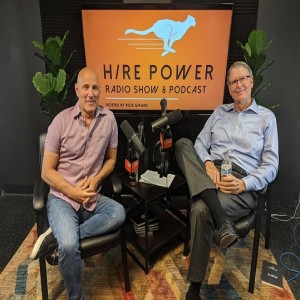
Thursday Jun 25, 2020
Thursday Jun 25, 2020
Ever finished an interview with a great person and just felt unsure or maybe you need more data to make the decision either way?
This all too common scenario is caused by a poorly executed interview process and not asking intentional questions designed to gain the evidence to support a decision either way. Today we will be discussing how to avoid the pitfalls of this conundrum when hiring for your company.
Our guest today: Steve Pfrenzinger CEO & Head Peformance Coach of Pfrenzinger Agency, Inc.
Steve Pfrenzinger is an entrepreneur, a coach to entrepreneurs and a Hall of Fame investor in entrepreneurs. He’s also an author, speaker, and Self-Awareness expert helping entrepreneurs, innovators and change agents solve big problems. Steve is also a Forbes Coaches Council member.
Using his decades of experience building multiple 8-figure businesses, where he hired over 1,000 team members, Steve has helped hundreds of clients make better decisions, plus expose their career and business blind spots that can clear their path to success.
Today we are discussing
- Why gathering evidence is critical to support your decision
- What Steps need to be taken to avoid this conundrum
Why is gathering deep evidence important
- You have found a very good candidate, but you are just a little unsure, you want one more data point
- E.G., 3 said yes and one said no or “not sure”. then what?
- Finding out how people are “wired mentally” in DISC or Myers & Briggs might impact the decision
Why is this important
- Personality type is a predictor of future behavior and key to major hiring decisions
- Knowing one’s “preferences” is key, how they “lean” in certain situations, e.g., Thinker vs Feeler
- Ask Steve to define a “preference”
4 elements to the personality
- Compare DISC styles to Myers & Briggs types. Cheat sheet below. If you know one, you know the other. If you know neither, you need to find out.
- D = ET (Dominance = Extroverted Thinker)
- I = EF (Influence = Extroverted Feeler)
- S = IF (Stability = Introverted Feeler)
- C = IT (Consciousness = Introverted Thinker)
Rick’s Nuggets
- Interview questions need to be intentional
- Digging deeper uncovers the truth…. How & Why?
- Must avoid injecting your own personal bias/agenda
How do we do it?
- Ask them for their DISC style or M&B type
- Have them take a test at www.16personalities.com
- Fast type them with Steve’s 2-page form, uses easy-to-learn computer metaphor
- Fast typing form, Steve has one for all that ask. Contact him at steve@stevepfrenzinger.com
What is Fast Typing?
- PIPO model
- Power
- Imput
- Process
- Output
Rick’s Nuggets
- Proper sequence: Interview => Assessment => Interview close
- Assessments often done too soon
Key Takeaways:
- Personality Type and the behavioral preferences (tendencies) it highlights can further insure the success of key hires.
- You can fast type others without a formal test in minutes, with the PIPO fast typing form
Check steve out at www.coachstevep.com or email him at steve@stevepfrenzinger.com He has many coaching and educational programs for executives and management teams, from entrepreneurial ventures to major corporations.

Saturday Jun 20, 2020
Hiring Trusted Talent with AJ Bruno of QuotaPath
Saturday Jun 20, 2020
Saturday Jun 20, 2020
Why you need to hire trusted talent to build and scale your startup. Referrals are still the strongest way to stack the deck with talent for your organization. But you cannot shortcut the interview process. Just because a person worked well in another organization does not mean they will be successful at yours. Diligence in gathering evidence of value, growth and cultural alignment must be gathered to avoid making a bad hire.
Our guest today: AJ Bruno, CEO & Co-founder of QuotaPath.
AJ leads the QuotaPath team as CEO & Co-Founder. Prior to QuotaPath, AJ spent 6 years at TrendKite, the company he founded and was president of in Austin Texas. At TrendKite, AJ led the go-to-market and sales strategy/execution and took that team from initial product inception through $20+ million ARR and 250+ employees. TrendKite was acquired by the public company Cision for $225 million in January 2019.
AJ is religious about vetting and hiring talent and has made over 300 hires in his career
Today we discuss
- Why trusted talent is the best option to build and scale your startup.
- What to do when you don't have a strong network
- The steps to take to hire through referrals:
Why is hiring “trusted talent” the best route
- Look into your own network of people you have previously worked with or go to a trusted source to help build the team you need to take you to the next level.
Why is this important
- Avoid running into bad hires
How do we do it?
- Reverse engineer your network
- Looking for trust and loyalty
- A lot of back channeling (connect with at least 5 people)
If you know the person?
- He needs to justify why for both parties
In the Interview process
- Disqualification questions- do you know who Elon Musk is?
- Tie questions to the importance of the role
Rick’s Nuggets
- Knock out questions
- Provide a growth path to avoid a transactional experience
Key Takeaways:
- Backchannel with at least 3 references if the hire is very strategic (the first hire in their position or respective position)
- Create a consistent process (with knockout questions or frameworks) if it will be a hire you will make multiple times (sales reps).
- Ensure that the person is sold on working with you and learning from you as much as possible if it is a strategic hire.

Thursday Jun 04, 2020
Why do You Need to Hire a Leader? with Ed Tyson of PerSynergy Consulting
Thursday Jun 04, 2020
Thursday Jun 04, 2020
Will a subject matter expert be a better solution to hiring a leader for your company? We can all agree that there are different types of leaders. I am going to contend that the wiring of the leader you are hiring is more important than the pedigree that is brought to the table.
Our guest today: Ed Tyson, CEO of PerSynergy Consulting.
Ed Tyson is the chief executive officer of PerSynergy Consulting, architect of LeadershipSOPs, author of From Expert to Executive: Mastering the ABCs SOPS of Leading, and executive coach and consultant to both small niche brands and Fortune 500 companies. With a mastery of leadership refined throughout his years as a Marine, executive, coach and consultant, Ed guides executives, to key findings he has learned through intimate connections with a diverse array of leaders.
Today we are discussing
- How to identify the right leader for your startup
- What steps you should take to build the right job description to find the best candidate to fill this position
- What questions you should ask to ensure your candidate is the best fit for the job
Why not hire a leader in your startup?
I think we can all agree…
- ...leaders have a tremendous impact on your culture and process. The smaller the team, the larger the impact of each individual but particularly each leader.
- Deciding to add your next leader could either be that decision which propels you forward or sets you back.
- Leaders are more expensive and more capable of damaging your culture than individual contributors - so be certain it’s a leader you need, that you are clear about the challenge you need answered, and you are confident your candidate can indeed answer it.
- For example, there is a start-up client I am working with right now, just north of here in LA county. They are in the biotech space and have hired several key leaders from a much larger, global entity in the broader pharma space.
- The leaders they have brought on were extremely competent and well-positioned to lead the functions which they were hired to run. HOWEVER, they were not prepared to engage in both the breath of strategy and depth of tactics the job requires. Further, they are struggling with the lack of defined processes and support from other functions. Consequently, project timelines are being missed and their time-to-market will be impacted.
- Going the other direction on the 5, I have a client in San Diego county in the manufacturing business who is just reaching beyond the start-up phase. They have a relatively small corporate staff but almost a third of them are leaders with big titles but very small teams (with one or two subordinates a piece). Additionally, almost every leader is an internal promotion with no professional leadership experience – this founder has placed a lot of bets on continuing to cultivate raw talent but does not have the time to do it – which is admirable but making it difficult to grow beyond his current book of business or empower these leaders to really lead.
- At the end of the day, the team is too big and too inexperienced to comprehend and reach decisions without its leader (keeping the CEOs nose in the very parts of the business he has to escape to hit his growth targets).
- Both of these companies made the same mistakes (just differently). They both failed to clarify and challenge what they needed and ensure they got it.
- So again, my first tip is don’t hire a leader in the first place… unless and until you are confident you absolutely need a full-time person whose primary role is to structure, operate and perfect a community of effort.
- If that thought makes you nervous, if you're worried who will do the work, you might need someone to lead the work, not the people. Don’t fall into the trap of mistaking a technical lead, a senior subject-matter expert for a leader.
Rick’s Input
- Focus on correctly positioned talent
- Avoid vanity hires
How do we hire leaders then?
- Purpose of a Leader
- The purpose of adding a leader to your growing team is not to add to your subject-matter expertise, it is to ensure someone other than yourself wakes up every day focused on cultivating a willing, capable and sustainable community of effort. Leaders are no longer obsessed with their craft because every step a leader takes on the career ladder is away from their craft.
- Leaders are not obsessed with technical puzzles. They are obsessed with people puzzles. Their primary work functions are to structure, operate and perfect powerful communities of effort.
- Do they need to understand the work? You bet. But their work is different from the team’s work. And the better you understand that work, the work of a leader, the more likely you are to find the type of leader you need.
- Defining Your SCOPE
- For me, it all starts with understanding the SCOPE of the community of effort you need.
- SCOPE is an acronym which helps leaders remember the five most important architectural components of a community of effort. It stands for Strategy, Culture, Objectives, Purpose and Ecosystem. You can think of it as a replacement for the old mission / vision / values mantra which still permeates business schools today. In fact, Culture, Objectives and Purpose stand for exactly those same three components. The different being, the full SCOPE acronym adds the importance of understanding the players and interactions within your ecosystem and the strategies you craft by considering that ecosystem, how you deliver value to it (i.e. your purpose), the objectives you set (from both a visionary and near-term perspective) as well as the culture you have and the culture you’d like to have.
- Your best shot at getting the leader you need is taking your best shot at defining the company SCOPE and the departmental SCOPE for the team you want this leader to lead (and do it with your existing team if you can).
- Your clarity here will allow you to differential the team’s work from the work the leader must do to be successful. This will result in a rich, leadership-focused job description based on the real work of leading.
- Then you can use the interview to pressure test key concepts in your company and departmental SCOPEs across a broad set of applicants (think of it as free consultation) and dig into the how.
- Process Not Outcomes
- Don’t fall into the trap of listening to canned lists of outcomes your candidates come prepared to throw at you. Ask about the how, the process. How did they refine the SCOPE at their last job? How will they do it here? How will they stay in alignment with the departments to their right and left? How will they stay aligned with you? How will they translate it into clear work methods, roles and responsibilities, how will they structure rewards and recognition; how will they secure the knowledge and capabilities you need to succeed? What repeatable processes do they use to inspire and engage people, drive accountability, evolve the team, etc.?
- I think the most important thing is to gain insight into their own personal LeadershipSOPs – in other words, what are their standard operating procedures for structuring, operating and perfecting communities of effort?
Rick’s Nuggets
- Job descriptions
- Person type (builder, improver, maintainer)
- Performance metrics
- Evidence of past performance
- Performance tied to process
Key Takeaways:
- Don’t Hire a Leader in the First Place!
- Throw Away Your Job Description!
- Ignore Candidate Stories about Outcomes!
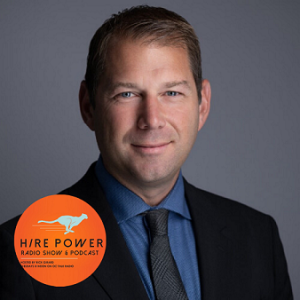
Friday May 29, 2020
Friday May 29, 2020
The vast majority of companies still do not have any policy in place to support work from home. As the majority of companies have switched to remote work and plan to implement this new system going forward - companies need to understand how to make an effective switch that will align with their company goals and business development strategy.
Our guest today: David DeFrancis, CEO of IT Proactive
David started his first computer consulting business in 1998 and launched IT Proactive in 2015. He noticed a need for security and process in small to medium sized businesses was completely under-served. IT Proactive is an outsourced IT Support firm that you can trust. We offer fully managed IT solutions that are simple, affordable and all-inclusive.
Today we are going to discuss
- On boarding and Off boarding Employees
- Remote work policies
- BYOD policies
What are today’s challenges when successfully onboarding and offboarding terminations?
- No on boarding or off boarding checklist (Directory Service Accounts, email, application permissions, devices)
- 1 off policies
- Personal devices accessing the corporate network, not having a separate vLAN (Internet Only) for employees (What is acceptable in the organization)
What policies need to be in place
- Acceptable use for company equipment
- BYOD - where most companies fail
- Remote Access Policy- work from home
- Personal Device v. Corporate Device
- Its all about data integrity and security
- Equipment reimbursement
- Internet access/ security (remote location)
- VPN
- Firewall with Security Services
- BYOD- allow employees to access data
- Failure point
- - Written policy on what they can & cannot access
- - MDM- mobile device management software
- Failure point
- When people leave they can put their phone on airplane mode to access shared company files (locally synced data)
Rick’s Input
- On boarding is a continuation of your interview process. This determines your ability to retain your strongest people
How do we create an effective internal policy around remote access?
- Questions need to be asked first
- Can company data be accessed on personal devices?
- Can data be accessed remotely via web browser. (Email, Sharepoint etc)
- Protocol in place for a security breach
- If a breach is detected, who to contact, plan to notify customers / vendors
- Protocol in place for a security breach
- Are remote computers encrypted
- Are computers connected to a directory service?
- Mobile device management policy in place?
- Security protocol in place to wipe data (MDM)
Now Create Acceptable use policy for Company Devices (template)
- Taylor to specific company (Questions to ask)
- Outline what applications are acceptable to use on device
- Can the employee access personal email, social, banking, etc… for company owned device
- Websites that are acceptable to access on a work device (Personal Banking, Social Media etc)
Create a mobile device management policy
- Dependent upon server location
- Dependent upon BYOD or company owned devices
- On prem, cloud, hybrid
What needs to happen when a person starts?
- On boarding process
- Recommend providing company owned devices first!
- On boarding Checklist:
- Typically IT Managed
- Directory Services Account
- Email Account / O365 / Sharepoint
- LOB Applications
- Permissions for LOB and File Share(s) / Sharepoint
- VPN in applicable
- Mobile Device (Email, Sharepoint, Supervised v. Managed Mode MDM)
- Company Policies, delivered and signed by employee
- Off boarding
- 1. Typically IT Managed
- Remove Access to all devices during exit interview
- Force Sign Out of any BYOD devices.
- Directory Services, LOB applications, File Shares etc
- Archive devices
- 2. Do not tamper with user date until its archived
- Point in time archive- home folder, desktop image, email
- Off boarding checklist for HR & IT
- 1. Typically IT Managed
- Signed document that all company owned devices are returned
Key Takeaways:
- Start Policies (even if it has 2-3 items in it)
- Acceptable Use Policy
- Remote Access Policy
- BYOD Policy
- Create and On boarding and Off boarding Checklist
- Be in sync with HR and the members of your team when exiting an employee
Guest Contact: david@itproactive.com

Friday May 22, 2020
How to Manage Remote Teams with Shiran Yaroslavsky of Cassiopeia Tech
Friday May 22, 2020
Friday May 22, 2020
A remote workforce has proven to be challenging to a lot of companies who have traditionally run operations from a centralized location. Aside from the technical issues (ie:security and connectivity) productivity, engagement and mental health become more difficult to manage. Today we take a dive into how we can utilize policies, tools and data to create a more engaged remote workforce.
Our guest today: Shiran Yaroslavsky, Co-Founder & CEO of Cassiopeia Tech
A startup that empowers managers that lead fully or partially remote teams to maximize workplace experience. Our solution delivers actionable insights to boost team collaboration, belonging, and mental health by analyzing communications patterns (not content) within and among teams. Shiran is an expert in all things related to data driven products and people analytics and was featured in 2019 Forbes 30 Under30 list.
In this episode we cover
- The problems of managing a remote workforce
- Providing direction on how to fix it
What are the remote work challenges are companies facing today?
- 77% Managers feel it is harder for them to manage their team remotely
- Don't have visibility, water cooler talk
- Creating a sense of belonging becomes more difficult (more than third were affected)
- Needs not being met.
- Need more empathy (fear, uncertainty) (36% of employees would like their managers to be more empathetic to their challenges at home to improve their work experience.).
- Lead with an open approach
- Be more sensitive to employees’ needs and how we interact.
Why is this important?
- Managers need to constantly asses the team pulse
- Remote teams are the future (GitLab report. 86% of respondents believe remote is the future)
- New skills and tools that help to adapt to the new environment
- Challenge with surveys
- People are fearing for their job
Rick’s Input
- Leaders must adapt, or parish
- Changes operational efficiency and the need for more hands on management
- Cuts the need for layers of management
What needs to happen for a company to be successful in managing a remote workforce?
There are 3 main domains companies should adjust in order to be successful in managing remote teams:
- Establish Remote Work policies & culture that are suitable for remote work. There are 3 things we need to pay attention to.
- Rules - We need to establish new rules for gaining clarity
Will we pay people for overtime if they work off-hours? How do we manage security and passwords? - Norms - When do we email, text, or message people? Are cameras always on for online meetings? How do we run and manage meetings?
- Design our broader company DNA -
- Rules - We need to establish new rules for gaining clarity
- How do we communicate when we aren’t satisfied with something? How can we stay connected while working remotely?
Establishing the right culture will help us to foster trust - Training for managers
- My interview with Amy Cappellanti-Wolf. Today the new leader is more about empathy. It’s still about driving for results but in a more collaborative way. Much more listening and a lot more guiding rather than directing.
The new leader also needs to be more flexible and innovative to adapt to the new challenges as the world is changing very fast. - Training can help to gain these new skills.
- My interview with Amy Cappellanti-Wolf. Today the new leader is more about empathy. It’s still about driving for results but in a more collaborative way. Much more listening and a lot more guiding rather than directing.
- Tools needed
- Working remotely is not just working from the office only with Zoom. Working remotely creates new challenges for leaders. According to our data - 77% of managers indicate it’s harder for them to manage their team remotely. There is a workplace experience gap that technology can help in closing.
- Team Insights tools.
It is more challenging to use Surveys for feedback tools (employees are busy and insecure while as a manager you need fast real-time insights to act on).
- Team Insights tools.
- Communication shifted to online - people analytics can empower remote managers.
- Examples from Cassiopeia - We analyze communication patterns to provide actionable insights to improve collaboration, belonging and mental health.
- For example - create a healthy workday balance. Experience of new employees
-
- Communication platforms (zoom, Slack etc)
- Collaboration tools - to share documents, thoughts, goals.
Rick’s Nuggets
- Your policies need to start with your interview process and carry through to onboarding and tenure. Not just when the person is already working for you
- Implement the same management tools in the hiring process. It provides a real life picture of how you work.
Key Takeaways:
- Be Aware of the workplace experience gap created by the shift to remote work
- Design the right policies and company culture to allow your company to prosper while working remotely.
- Use the right tools to boost your teams’ collaboration, communication, and employee experience.

Thursday May 14, 2020
Thursday May 14, 2020
There is a flood of great talent on the market and the competition for those limited positions is heating up. With this rise in the talent pool the ability to properly access applications is a major challenge. The bar has been raised! Are you leaving good people on the table?
Our guest today: Shawn Sheikh, Co-Founder & Managing Partner of Pivot CMO
Shawn is a Silicon Valley & Beach serial entrepreneur and Y Combinator alumni. His specialty is helping companies scale from $0 to multi-millions in revenue, through both conventional paid acquisition and non-conventional growth hacks.
Apart from Pivot CMO, Shawn loves to work with founders to find creative ways to scale their businesses and owns and invests in a portfolio of small to medium sized businesses
Today we are discussing
- The challenges in a heavy applicant reply market
- How to effectively screen applicants to avoid false positives
What are the issues you are finding in screening applicants
- Quality
- Response rate
- Don't want to do the case study
Right Approach?
- Reply with application (google form)
Phone Screening
- Report to person call screen
Rick’s Input
- Job description- performance metrics and call to action
- CTA: 3 questions for submittal - to be completed for all applications
- Timing of the event…. ie: when to do a test
- Phone screen for Purpose
Current process that works
- Application process does work (cuts from 3k to 300)
- 20-30 people are qualified (phone screen)
- 75-80% show up for phone screen
- 6-8 to interview
- 1-2 to offer
Referrals- from employees
- 4 all hires
- One referral from a person they
Process
- Applicant review/application
- Phone screen -50% technical/ 50% fit
- Walk through assignment
- Test
- Interview
- Offer
Rick’s Nuggets
- Interview Structure & process tied to your Company values
- “What are you capable of achieving?”
- Make the call based on the person’s answers rather than the resume
Key Takeaways:
- Better screening questions during the process
- Addressing people’s needs before money
- Owning who you are!

Thursday May 07, 2020
IT Infrastructure in a Remote Work Environment with Greg Keller of JumpCloud
Thursday May 07, 2020
Thursday May 07, 2020
The remote work mandate is still proving to be challenging for a lot of companies. Work from home is here to stay and we have to embrace the changes - there’s more to it than just making sure your employees are getting the job done. Today we are discussing how to get your IT infrastructure dialed in to increase performance in your business.
Our guest today: Greg Keller, CTO of JumpCloud
Greg Keller is the Chief Technology Officer at JumpCloud. He was responsible for productizing and launching the company’s initial directory service product offering to market in 2014. Greg is a career product visionary and executive management leader with over two decades of product management, product marketing, and corporate development experience ranging from startups to global organizations.
Today we discuss
- The challenges of IT in our new ‘corporate’ normal
- Some of IT related Hiring challenges
- How you can get your company ahead of the curve
What are the IT challenges companies are facing right now?
- The brittle on prem It workforce is now forced to move to the cloud
- Security when outside the ‘brick and mortar’ offices
- For those that still *can* hire, interviewing and onboarding is challenging
IT challenges in the hiring process?
- Obvious - you’re not physically with them
- Video Interviewing
- Time demands required over Hangout/Zoom
- Panel, with follow up 1 on 1
- Typically done in 1 day in person
- COVID = smaller chunks over 2 or 3 days if needed
What IT structure needs to be in place?
- DIY
- A patchwork of tools and write own automation
- Access control- active directory
- Be able to manage remote machines
- Governess to maintain compliance- devices
- Remote to on prem servers (VPN)
- Get clients on the machines
- Jumpcloud - onboarding through productivity
- All in one access control software
Hiring process?
- Onboarding
- HR systems (bamboo, workday, etc)
- Manage access to systems relevant to your role
- Formats the computer direct from the vendor
Key Takeaways:
- For IT in the new normal: Think ‘forever remote’ - Consolidating vendors will be key, as will ensuring the tooling will provide an ability for the employee to have zero dependencies to a brick and mortar office.
- For hiring remotely: Think ‘Culture must shine through a Zoom meeting’ - Engineering managers and those responsible for engaging the candidate beyond ensuring their skills match or exceed the job need, must ensure they understand that employees motivations, behaviors, etc, in the context of not being physically near a team
- For the state of employee mental health: Think ‘We owe our workers latitude and empathy to balance their new realities’ - Two adults at home - screaming kids, at home schooling, work pressures all add up to a degraded and intense life experience. The place of employment should do its part to assist the employee with getting through this.
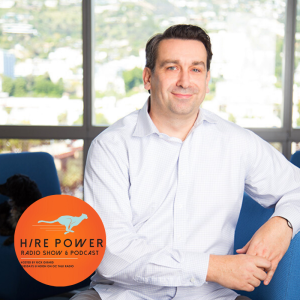
Thursday Apr 30, 2020
Using Assessments to Eliminate the Resume with Josh Millet of Criteria Corp
Thursday Apr 30, 2020
Thursday Apr 30, 2020
The key to successful hiring is in uncovering evidence in a person's ability to align culturally and professionally with your unique company. … None of this evidence is on a resume! How do we gather evidence? First, not short cutting the interview process. Focusing on deep behavioral questions then confirming your conclusions with data through assessments.
Our guest today: Josh Millet, Founder & CEO of Criteria Corp
Josh started the Criteria Corp in 2006 with a vision to create a SaaS-based pre-employment testing service that would make the highest quality employee assessment tools accessible to companies of all sizes.
Criteria has over 4,000 customers in more than 40 countries across the globe. Their pre-employment tests are an efficient and reliable means of gaining insights into the abilities and tendencies of potential employees.
Today we discuss
- Assessments
- Why and how to use them effectively
- A process to properly assess the person you want to hire
Why are assessments important?
With all the advances in HR tech in the last ten years that have transformed talent acquisition, we aren’t getting better at hiring when you look at results. 46% of all new hires are unsuccessful. The problem is we are relying on 70-year old tools, resumes and unstructured interviews, to gather info on applicants and make hiring decisions. These tools are letting us down. Why is it important? Immense bottom line implications.
Problem with Resumes
- Poor, incomplete, unreliable information that in the end does not predict much
- 85% of resumes contain falsehoods or inaccurate information
- Inject unconscious bias into the hiring process
- Boston & Chicago study
Unstructured interviews don’t work much better. Highly subjective, most interviewees make decision about applicants in first 5 minutes, based on highly subjective Criteria
- Evaluating for good data - using objective data to reinforce your decision
- When you think about how to gather data to make good decisions on candidates you should be focusing on:
- Accurate, reliable info
- Objective data not subjective impressions
- Removing bias from decision-making
- Being forward-looking data: how can this person learn, evolve as job does, rather than just past experience
Why are assessments the answer to resume
- Focus on good reliable data
- Things that are relevant to the job. Data that is not subjective and predicts job performance
- Ie cognitive ability (best predictor or job performance, critical thinking, attention to detail learning ability, problem solving)
- Behavioral or personality assessments - Interaction driven roles
- EQ/EI- overlapping
Rick’s Input
- Confirmation of data gathered minimizes bias
How to do it?
- Moving past the resume
- Use assessments early in the process (high applicant to hire ratio)
- Right after the application
- Resume submittal
- Link to assessment in the job post
- Most common after the application has been accepted
- Passive searches (a bit later in the process)
- Assessment become a resume substitute
Process for Active
- Choose assessments that are job related
- Measuring things important to the role
- 30-40 minutes of assessment
- Tailor the testing for the role
- Run at the Application stage or just after (automated)
- Use results to prioritize the people that are more likely to succeed
- Interview
- Assessment can generate further behavioral interview questions tailored to the individual based off their results
Process for Passive (recruits)
- Smaller number of people
- Lower number of people interviewing
- Use later in the process when the candidate is more engaged
- Assessment after the phone screen
- During the interview or just before
Rick’s Nuggets
- Must gain a personal buy in BEFORE giving tests or assessments
- People perform better when they want something
Key Takeaways:
- Do things in your hiring process to get good data
- Make sure everything you are using has a purpose that measures outcomes related to it

Friday Apr 24, 2020
Friday Apr 24, 2020
How can you tell if someone is good just through a phone screen?
A BIG thanks to our guest today: John Driscoll, Co-Founder & CEO of Naked Development.
Part 1: Outlining Key Points for Episode:
- Phone Screening: From reviewing the application to proceed to scheduling a call should be between 2-4 days (MAX)
- Ideal timing for phone call: 45-60 minutes
Part 2: 3 components of the phone screen (understanding the person) Why, What & How
*PAIN (Why):
- Discussion part 1:
- Pain is the person's reason for talking to you
- Types of PAIN to be aware of from an employer prospective:
- LEGITIMATE PAIN
- Lack of Growth
- Work Content/Technical Exposure
- Leadership Issues
- Unappreciated, Under challenged, Underutilized & Underwater
- Commute
- SELF-INFLICTED PAIN
- More Money
- Personality conflicts
- Always open
John’s role “Hiring Manager”
*DESIRE (What): What is the environment that this person will THRIVE
(This is the part where the employer should look into whether or not the candidate is a cultural fit)
- Things to consider when taking a deep dive into their desire:
- Their Vision for where they will thrive
- Fit to your company
- Important note for employers:
- Cultural fit and Attitude are far more important than skills. Yes, More important than skills! Skills can be taught and acquired. Attitude and cultural fit are often woven into the fiber of who this person really is at their core.
IMPACT (How?) (Identify Level of performance)
- Evidence of Success
- IMPACT - Do they go above and beyond (This should be demonstrated by example they give you of their past success and how they work with others)
- Commitment to Personal Growth
- Phone Screen Script:
- *PAIN (Locate a solid PAIN) …. Dig, dig, dig!!!
- What is happening with your current role that is making you open to exploring something potentially stronger?(Very important one to begin with)
- *DESIRE:
- If you could create your next company, what would that look like for you?
- What is your vision of your next role?
- What type of environment do you flourish? Culture, Size, Role, & Domain?
- *IMPACT:
- Tell me about the most significant impact you had in your current role?
- *SKILLS:
- What are your core Strengths?
- COMMUTE:
- Where are you willing to commute on a daily basis? (push limits)
- INTERVIEWING: Currently: Interested:
- To properly pace out the process, where are you in the interview process?
- CITIZENSHIP:
- What is your current work authorization status?
- SALARY: Looking to make $
- What are your minimum salary requirements?
- AVAILABILITY:
- What is your availability to interview this week? (dates/times)
- ***OFFER ACCEPTANCE MAIN CRITERIA: 1: 2: 3: 4:
- What are 3 or 4 “Main Criteria” that you would need to see in a company for you to accept an offer with them?
Final Step: Connecting the Dots
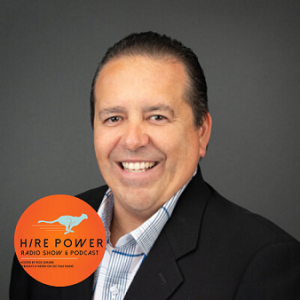
Thursday Apr 23, 2020
Thursday Apr 23, 2020
We are now living the new normal.....And that normal is a mostly remote workforce, work/life/self balance and a heavy reliance on technology to lead the business. It is not about keeping what you have but changing who you are to adapt your business to the new world. Companies who will thrive are those who are embracing the change and committing to disrupting their own business. Not holding on to what was. Today is all about embracing the opportunity that has been given to us during this pandemic.
“We are never going back to normal. Too much has been exposed in the inefficiencies of expensive office buildings, amenities, drive time and personal time.” - Rod Trujillo
Our guest today: Rod Trujillo, Founder & CEO of International Rubber Products
A company founded in 1999 with the sale of all personal assets including savings and retirement accounts. IRPG is comprised of three distinct facilities in Southern California focused on the Medical Device industry, Aerospace/Defense industry and the Coating and Laminating industry.
The cornerstone and key component of our success as a business is the principal that regardless of macro and microeconomic changes, the company will be run as a God honoring business that seeks to bless everyone it encounters. As a result, IRPG has been adding 25-40 employees annually the past five years and has an annual five-year compounded annual growth rate of 23%.
Today we discuss:
- Why this forced change is a blessing to your business
- Where to focus
- How to implement change
Why the change is a good thing?
- Efficiency!
- We are not as efficient as we think we are… but more is getting done under the current environment and the company is more productive… we are finding that you don't need as many people… realizing how inefficient they have been
- Realization
- People like coming to work and appear to be more social than we thought. Along with technology we are able to touch each employee daily and track projects which we are seeing projects getting done much faster.
- Question
- Assess what you really need?
- Now that people are isolated, you really start to see how productive people can be especially when you add a little fear of the economy as well as being confined to the home.
Where do we need to focus?
- figure out the technology tools and track productivity.
- Realize we weren't managing efficiently and were over staffed.
- Understand you can do more with less
- Realize that the office has really been used for social interaction
- easier to manage people through the lock down than it was
Rick’s Input
- Deep evaluation into what the business REALLY needs
- Upgrade in Performance mentality
How do we get ahead of the curve and thrive Now?
- Pro-activity
- Get ahead of what is being shown. Be proactive and being to embrace the video conferencing technology along with project and daily touching of employees.
- Encourage this change to make the workforce more healthy by having a workout as part of the daily routine for attendance etc. Establish benchmarks and data everyone can become excited about.
- Tools
- Using Zoom- and other technologies we are improving with has really changed how we think about our administration moving forward post covid-19.
- Data
- Read up to get ahead of the curve. Gobs of information.
- Transparency and pro-activity
- Do more with less while selling a new vision of a healthier work balance experience driven by results and care for each employee.
Rick’s Nuggets
- Zoom for Interviewing
- Invest in educational growth (self & company)
Key Takeaways:
- The rapid changes in hiring, retention and adjusting to a new normal. Being forced to home quarantine has shown the inefficiencies with our administration systems as well as management of personnel.
- We need less and can do more. Corporate offices with amenities are monies that should be invested in the workforce and technology. Eliminating an hour of commuting while people are more efficient without the social interruptions make the execution of projects more robust.
- Adding by our estimation a minimum of ten hours a week to either personal time or work time. (AVG drive 5 hours, 5 hours of social interaction)
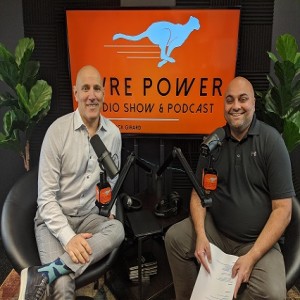
Thursday Apr 16, 2020
AI: Solving for Ego Hires that Fail with Neil Sahota of UC Irvine
Thursday Apr 16, 2020
Thursday Apr 16, 2020
Is AI the future of recruitment? Better yet, will AI replace the need for a resume? Tools are available to utilize AI in improving workflow and screening applicants. The question lies in their accuracy and viability in identifying the strongest people for your unique organization.
Our guest today: Neil Sahota, AI Expert & Author of “Own the AI Revolution”.
Neil Sahota is an IBM Master Inventor, United Nations (UN) Artificial Intelligence (AI) Advisor, Faculty at UC Irvine, and author of Own the A.I. Revolution. He is one of the few people selected for IBM's Corporate Service Corps leadership program that pairs leaders with NGOs to perform community-driven economic development projects.
In addition, Neil partners with entrepreneurs to define their products, establish their target markets, and structure their companies. He is a member of several investor groups like the Tech Coast Angels and assists startups with investor funding. Neil also serves as a mentor in several incubator/accelerator programs.
Today we are going to discuss
- All things AI, What is it, how does it help with hiring
- Why it is important today
- How to implement the effective use of AI into your hiring today
Why is AI important in hiring through today’s landscape?
- People looking for work should be looking for more than just a paycheck.
- Why is this important?
- People quit when you bring the wrong person onto the team
- Productivity plummets
- Ai can eliminate the need for a resume!
Rick’s Input
- Automating workflow
- Sourcing/screening
- Good at all things transactional
How do we start leveraging AI to optimize hiring in today's landscape?
- Using AI to eliminate ego based hiring decisions
- Story of Omelveney (law firm)- use pymetrics
- Testing for cultural value
- Allow you to evaluate for culture and team fit
- Ai tools to analyze how well code is written
AI Tools Currently Available:
- Pymetrics: https://www.pymetrics.ai/
- Paradox.ai: https://www.paradox.ai/
- Ayra: https://goarya.com/
- Eightfold.ai: https://eightfold.ai/
- Xor.ai: https://www.xor.ai/
- Pandologic: https://www.pandologic.com/recruiting-with-ai/
Rick’s Nuggets
- Add CTA’s into your job postings to allow the cream to rise to the top
- Innovation is eliminating the resume
Key Takeaways:
- Elimination of resumes
- Reduced bias in recruitment
- Increased diversity & inclusion (by accessing “non-traditional recruitment pools)
- Quantifying cultural/team fit
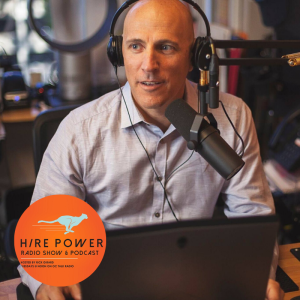
Tuesday Apr 14, 2020
Tuesday Apr 14, 2020
Special Episode!
Video Interviews are the new necessity. But what is the best way to run an effective process? Today we breakdown the framework to run a strong, evidence based video interview. Through partnerships with fully remote based companies, we are sharing what has proven to produce the strongest hires. RIGHT NOW is your opportunity to elevate your companies productivity by hiring stronger talent.
Key Points for Episode:
Timeline for Interview Process
- Startup- 7-10 business days max
- Review - 24 hours from submittal
- Phone Screen - 48 hours (Day 4 max)
- 45-60 minutes
- Video Interviews - 72 hours (Day 8 max)
- 1- 45 minutes
- 2- 45 minutes
- 3- 45 minutes
- 4- 45 - 60 minutes
- Decision - 24 hours from Final Interview (Day 10 max)
Interview steps
- Phone Screen - Phone / Video conversation
- Your Goal
- Learn about the person!
- Understand: Pain, Desire & Impact
- Not to pitch your company, job or yourself
- Video Interviews (Same Day Ideal)
- Ideal to line up back to back
- Schedule back to back or split them up 2/2 or 3/1
- Build a knockout question for each interviewer
- Interview 1 - Cultural Value Alignment I
- Interview 2 - Skills Screen
- Live working session to evaluate skills/communication
- Interview 3 - Cultural Value Alignment II (optional) 24 hours from interview 2
- Final Interview - Cultural Confirmation III & Offer preparation (Decision Maker)
- Decision / Offer (24 hours max)
- Best to give immediate feedback
- Time kills hires, be decisive

Thursday Apr 09, 2020
Thursday Apr 09, 2020
Remember that person who you really wanted to hire but they took a job somewhere else? Now is the time to reconnect. Through no fault of their own, great talent is being displaced due to the pandemic. Now is the time to proactively hire and raise the level of performance through opportunistic hiring! This crisis will pass. And when it does, emerge as a much stronger organization and be positioned to crush your competitors!
Our guest today: Jeff Erle, Former CEO of MobilityWare
Jeff has held numerous C-level positions throughout his career. His experience spans across start-ups, small privately-held and large public enterprises including ADP, Western Digital, MobilityWare and most recently as the COO at Blast.
Jeff focuses on building high-performing teams and evolving award-winning cultures focusing on multi-generational workforces, developing/coaching key executives, and helping companies develop strategies to scale for growth and/or exit.
Today we discuss
- Why it is a great opportunity to hire
- A-players: what are they?
- How to identify and elevate your company performance during this downturn
Why is this important evaluate and proactively hire now?
- Talent is your #1 asset
- You now have the opportunity to upgrade your talent
- Missing an amazing opportunity to settle for the first people to knock on your door
- Now you have the ability to find an abundance of a players
Obviously, the Covid-19 virus has changed the world’s landscape like never before in our lifetimes. In particular, for businesses of all sizes, the nature of the workforce has and will continue to evolve, especially given the looming changes to the large number of workers that will be looking for work. Whether already or soon to be unemployed, or working for a company whose business model has been adversely impacted, millions of people will be applying for open positions later this year unlike anything we have seen in a very long time.
What's an A-player?
- top 10% of experience, capability, for the compensation you are willing to pay for the role.
Given that, for most companies, people are their greatest assets, the challenge will be to retain your A-players. And the opportunity would be to use this historic dynamic to “upgrade” your team and your organization. We’ll focus today on the latter, using the talent either already available or soon to be to assure our businesses come out of this cycle stronger than ever before.
Rick’s Input
- SalesForce, CEO Marc Benioff (tweet- 2200 jobs open…… prioritizing referrals of friends & family who have lost jobs.
- A-player - right profile (builders/startups), cultural alignment
- Desire should be workable
How do we start?
First step is to develop a definition of what an A-player looks like for your organization.
- One who is among the top 10% “available” for the open (or too be upgraded) position
- “Available” means: they are willing to accept an offer given the compensation level offered, in a culture such as yours, in your particular industry and location, with the resources available to them, with specific accountabilities/responsibilities, and reporting to a specific person
- Discuss examples...
Second step is to take an inventory, or a snapshot of your people assets and the level of their quality on an individual basis:
- Identify the “Pioneers” (A-players), “vacationers” (maintainers), and the “prisoners” (those always complaining… but they never leave; they feel handcuffed...)
- Methods to accomplish this include: (1) performance management tools (reviews, feedback, etc.) commonly used at year end for merit increases, and/or (2) “force-ranking” individuals either within departments, or if small enough, across the entire organization. (NB: There are numerous views/debates of the efficacy of force-ranking… but I have used it successfully, especially in circumstances such as this, when economic times demand tough decisions around headcount.)
Last step is to assure your recruiting strategy, methodologies and capabilities can fulfill this goal
Be diligent
- Shift focus to finding the best; this may mean balancing identifying and vetting “passive” candidates with “active” candidates.
- This means you cant be lazy. Its easier/faster to work only with the myriad of resumes and candidates that will be applying to your company this year, but they may not represent the best pool of A-players available to you.
- Ways to assure this include:
- If you have internal recruiting teams, assure they are aligned with your remit of seeking passive candidates as well as active.
- Get a good third-party recruiting partner to find the passive A-players and focus on presenting those people to your hiring manager(s).
Embrace increased volumes and/or new modes of interviewing
- Phone screens
- Video interviews (zoom, skype, etc.)
- Learn best practices on how to do these; many do’s and dont’s lists now available
- Teach managers how to do an appropriate phone screen and video interview
- Pre interview prep and internal alignment amongst interviewing teams
- What are the top key capabilities you all want for the role?
- Who is vetting which ones?
- Who is determining cultural fit?
- Who is making the final decision? Is it unilateral, consultative, or consensus?
- Agree on Who is “buying”, who’s “selling” during the process?
Remember:
- The more time you spend up front the less time you spend in the interviews themselves
- Poor managers don't want to do the work up front to coordinate
- You need to stand out to be the memorable company to attract the A-player.
- People go to work for good leaders/managers (converse of that's what they quit), not just good companies.
Rick’s Nuggets
- Build a list and say Hi
Key Takeaways:
- Now is a great time to re-evaluate your talent, your greatest asset, and upgrade as necessary
- To do so, you will need to embrace new internal areas of focus and philosophies, and your org will need to embrace and/or learn new ways of defining, finding, vetting and attracting A-player candidates
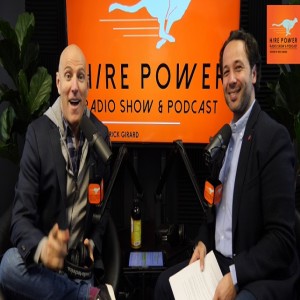
Friday Apr 03, 2020
Secure Funding Through Your Hiring Process with John Yanyali of JuiceBot
Friday Apr 03, 2020
Friday Apr 03, 2020
Fundraising is difficult especially when you are missing a hiring process! Understanding who you are and defining your process are critical in bringing confidence to your investors. It is NOT difficult to solidify a process! Bring confidence to your team and your investors by demonstrating that you understand the importance of getting the right people on the bus!
Today’s Quote:
"You must have confidence in your competence." - Elijah Cummings
Our guest today: John Yanyali, CEO of JuiceBot
John is an energetic entrepreneur who jumped into the business world by investing in the agriculture, education, construction, and technology industries.
He is the former COO of Elektronet, a digital technologies provider similarly focused on the Smart Industry. With John’s involvement, Elektronet became the largest manufacturer and developer of custom hardware and software systems in the Middle East and North Africa. In 2017, he joined Juicebot as an executive board member and last year, he was made the Chief Executive Officer of Juicebot. He builds and models a great company culture while providing inspired leadership
Today we are going to discuss
- Why having a hiring process is critical in raising funding
- How build your hiring process into your capital raise
Why does Your Hiring process affects fund raising
- Investors invest in the people more than the idea itself. A great team will turn a great idea into a great product or a service.
- The technical people who build the product are the key.
- Experienced, key players with a stake in the company will significantly contribute to the business.
- Besides creating a great product, they will help the management in creating new revenue streams.
- Technical due diligence is becoming more important for the investors. Where your product is from a technical stand-point will define its success. Therefore, the investors are spending a considerable amount of time trying to understand the technology behind your product so they can help you with the product-market fit.
- Technology companies need great technical people who own up to the mission of the company. We need to build not only a great company culture but also an authentic engineering culture.
- This will give investors the confidence to fund the company as the alignment of business and technical is necessary to succeed.
Why was it important to bring technical talent first?
- Technical people (engineers, designers, developers) are actually turning the idea into a product. They own the design process.
- We need to connect them with all aspects of the business whether it is marketing, sales, or investor relations.
- We need to create a platform where transparency is key to getting things done. We can not and should not compartmentalize. All the stakeholders of the company need to be aligned on the mission and the vision. That can only be achieved by being transparent and sincere.
Rick’s Input
- Highest failure rate is after seed funding
- Pressure from investors
- Most critical hiring happens after raising seed round
- Critical to have a process at this point!
- Sloppiness kills talent attraction, without talent no future capital raise
How to build hiring process to attract funding. Where do we start?
We need to surround ourselves with effective advisory board members to bring in the expertise we may not have. For many entrepreneurs, the decision to involve outsiders in their business may be a wrenching step. Some simply do not want to dilute their control by establishing a board of directors with formal responsibilities and authority. However, the introduction of an advisory board can help some come to terms with this decision, by enabling an entrepreneur to feel comfortable with the business of providing information to, and accepting advice from, an external group.
- Get the message out there to get help from the startup community
- You need a lot of help. Networking at events, forums… ask for help
- Figure out what you don't know. Then reach out to people with the problems you are facing and allow them to join you when the time is right
- If people are not joining, take a step back and ask why?
- We need to be open to working with other people and be open to feedback and criticism.
- Not isolating people to their lanes. Letting everyone involved contribute at all levels.
Rick’s Nuggets
- Outline your hiring process and timeline
- Phone screen, video/onsite interview, Decision/offer
Key Takeaways:
- The future of your business is dependent on your hiring practices. Every new employee will either contribute positively to customer satisfaction, growth and profitability, or contrasting have a negative impact on the business.
- By adopting a structured and comprehensive hiring process, you’re taking the first step in positioning your business for success by attracting the right talent. The type of talent that will help build the company culture, drive sales and ultimately position the company as a leader in the industry. Failing to instill the right hiring process will do the exact opposite, resulting in under-performing employees and wasting resources, time and money.

Thursday Mar 26, 2020
Conducting A Powerful Phone Interview with Christopher Wood of Rise Recruitment USA
Thursday Mar 26, 2020
Thursday Mar 26, 2020
One of the most powerful tools in your hiring process in the phone interview. The challenge that we have is that it is treated as a screen just to find out if someone has the skills needed. And this process takes on average 5-10 minutes.
It is such an opportunity loss because your first point of contact should be about establishing the connection with the person regardless of the outcome. Your phone interview sets the stage for how you are perceived and severely affects your ability to hire.
Today’s Quote:
"When it comes to success, there are no shortcuts." - Bo Bennett
Our guest today: Chris Wood, Director of Recruiting for RISE Recruitment USA & Managing Director of theRecruitmentCollective
Chris has spent the past 15 years in the Staffing industry utilizing his background in Recruitment and Account Management to help Fortune 500 companies solve their hiring problems by recruiting top talent within the Aerospace, Automotive, Medical Device, Healthcare, Finance & Consumer Goods industries.
In 2017, he took on the role of Managing Director at theRecruitingCollective, an organization of independent, specialized recruiters and boutique firms centered around providing new, custom talent programs. His primary focus today is attracting over and retaining top talent to the Cannabis, CBD & Natural Products industries.
He previously sat on the board for National Human Resources Association – Los Angeles and is currently on the program committees for DisruptHR Orange County and San Diego. In addition, he is an advisor to numerous Recruiting Technology platforms and emerging Cannabis and CBD companies and a member of the National Association of Cannabis Businesses.
Today we are going to discuss
- Why phone interviews are a critical part of the hiring process
- How to conduct an effective phone interview
Why are Phone interviews more important now than ever?
- Understand the person
- Goals, skills & interests - Career path/motivations
- Passive recruiting - building a constant stream of qualified candidates
- Due to the lack of face to face; with Covid-19 restrictions on in person meetings, this is the only way to hire talent during these times
- Sets the tone for process
Positioning of your phone interview
- Setting a clear objective of what you want to get from the call; feel for personality fit with team, explanation/knowledge of necessary experience, understanding of career path and long term intentions
- Asking specific questions that address strengths of candidate that fills a need with your team
- Identifying interest of candidate in role & joining your team
How to conduct a phone interview
- Self reflection- identifying the hole on the team
- Understand what is really needed
- Identify characteristics of the person so you can create questioning to reveal if candidates fulfills your teams need
- How are you going to find what you need
- Creating the profile of the ideal hire
- Establishing must haves vs nice to haves
- Contact
- Asking the questions that are centered around the key things you need to know
- Strategic questioning
Rick’s Nuggets
- Purpose of the phone interview is to understand the person first
- Identify their reason for hearing (pain), what they want to be doing (desire) and what they have accomplished
Key Takeaways:
- Don't just look at the resume, definitely talk to someone. Take the phone screen very seriously
- Really get to know what the person wants. Get to know them!

Thursday Mar 19, 2020
Thursday Mar 19, 2020
With the drastic changes in the current work environment we are pivoting a bit from hiring for today’s episode. We are discussing how to transition your staff to a “work from home” force by conquering some of the IT challenges.
Today’s Quote:
“Intelligence is the ability to adapt to change.” - Stephen Hawking
I’m Rick Girard and welcome to the Hire Power Radio Show. We help Entrepreneurs and hiring managers to avoid costly hiring mistakes by identifying a specific problem and providing proven solutions to enable you to WIN the right hire. We share insights from top-performing rebel entrepreneurs, disruptors & industry experts.
Like our guest today: Collin Mitchell, CEO of Monster VoIP
Collin Mitchell is a serial entrepreneur who is passionate about technology and his mindfulness practice. His first entrepreneurial project was with his wife in their apartment living room which they bootstrapped together to 5 million dollars of revenue within 26 months. Most recently, he has been working on Monster VoIP, a nationwide unified communications provider that gives enterprise features at an SMB price. Personally, Collin is an early riser, consistent meditator, and swimming enthusiast.
Collin runs a virtual organization that is thriving! Which makes Collin a perfect expert for today’s topic.
Collin, Welcome to the Hire Power Radio Show today!
Today we are going to discuss
- Why it is important to pivot your workforce to work from home
- How to set up improve productivity and security
- Why Pivot to remote work now?
What are the basics of what is needed?
- Strong Internet Connection
- Is home internet strong enough.
- Minimum internet connection - 50 mb.
- Depends on provider
- Offering a stipend to cover the cost of upgraded
- Laptop
- Dual core or higher with 4 gigs of ram north
- Phone
- Voip
- Company provided cell
- Proper noise canceling headset
- Possible Backup internet connection - overseas
- Tools
- Productivity
- Tracking Software- works as a time clock and checking employee productivity
- Messaging Apps for collaboration
- Security
- Active directory
- Jumpcloud - cloud based active directory
- Antivirus/malware up to date
- Online Training Software
- Well Being
- Getting dressed everyday
- Have a plan/schedule
- Taking breaks
- Meditation
- Short Walks
- Standing Desk
Rick’s Nuggets
- Clear performance metrics
Key Takeaways:
- These Things are all easy to implement
- They are not too expensive
- Focus on security and productivity by using tracking software and cloud AD
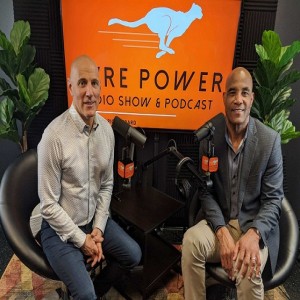
Wednesday Mar 18, 2020
Wednesday Mar 18, 2020
How to evaluate for good discretion in the hiring process. Discretion is defined by Merriam Webster as an “Ability to make responsible decisions”. This is a quality that all leaders expect from their people but as we know, this is not always the case. How do you interview to uncover good discretionary habits?
Today’s Quote:
"A sound discretion is not so much indicated by never making a mistake as by never repeating it." - Christian Nestell Bovee
I’m Rick Girard and welcome to the Hire Power Radio Show. We help Entrepreneurs and hiring managers to avoid costly hiring mistakes by identifying a specific problem and providing proven solutions to enable you to WIN the right hire. We share insights from top-performing rebel entrepreneurs, disruptors & industry experts.
Like our guest today: Joseph Hopkins, Founder & Senior Managing Partner of The IPRESTIGE Emerge Fund, LLC
Joseph is a thought leader in AI, authentication and security technologies, He leads an innovative emerging technologies firm that serves as a proprietary first-mover advantage IP incubation model that concentrates on growth opportunities in digital identity protection, security and advance encryption technologies.
Prior to Joseph’s AI and digital identity security work, he served in key executive management roles for Fortune 500 companies, including Kaiser Permanente, 3M, GSK, Allergan, and KPMG. He has hired Hundreds of people throughout his career.
Which makes Joseph a perfect expert for today’s topic. Joseph, Welcome to the Hire Power Radio Show today!
Today we are going to discuss
- Why it is important to Connect with people while adding value
- How to evaluate for good discretion in the hiring process
Connecting with people to add value
- Listening skills
- No one wants to hear about your problems
- Pick up on a person’s cadence
- What makes the person tick as a person
- Navigate how you engage as to their preference
- If you miss the connection, you’ll never get it back
- Pick up folks who miss the 9-5 mentality
Rick’s Input
- No one cares about the words coming out of your mouth
- While hiring it is critical to be more concerned about the other person than filling your role.
How to evaluate “good discretion”
- Trusting the gut, instincts
- Less tricky the older the person is
- More experience, the less risk
- Interest or passion in the work
- Experience
- Clear signs around eye contact, body language, smile while talking, taking themselves too seriously, jovial.
- Education - important to him.
- Live your life based on what you have learned rather than the exceptions
The ingredients that keep people engaged in an
- Balance of coolness and professionalism
- *Discretion - overly doing something can affect the relationship with the client
- The more the client is comfortable the successful the interaction will be.
Rick’s Nuggets
- Opener “open to hearing about something career advancing”
- Don’t pitch your job, company or yourself
- Find out what’s happening with you?
Key Takeaways:
- Empirical stuff- education, background & skills
- Interpretative- talk to people that have worked with you. Subjective perspective
- His Gut instinct- in conjunction with the other two

Thursday Mar 05, 2020
Building A Company On The Back Of The Gig Economy with Keith Ryu of Fountain
Thursday Mar 05, 2020
Thursday Mar 05, 2020
The grind of being a startup entrepreneur is riddled with rejection and heartache. It is often thought that you need the money before you can build your company… And that’s just not true!
The truth is there are so many ways to self fund when getting started and today we are dissecting a case study of how one company utilized the gig economy to fuel their company growth.
Today’s Quote:
"It's not the lack of resources that cause failure, it's the lack of resourcefulness that causes failure." - Tony Robbins
I’m Rick Girard and welcome to the Hire Power Radio Show. We help Entrepreneurs and hiring managers to avoid costly hiring mistakes by identifying a specific problem and providing proven solutions to enable you to WIN the right hire.
We share insights from top-performing rebel entrepreneurs, disruptors & industry experts.
Like our guest today: Keith Ryu, Founder & CEO of Fountain
Keith is quietly fueling the future of work. As CEO of Fountain, the Series A-backed hiring platform for hourly workers, the Forbes’ 30 under 30 member holds the keys to the secret engine powering the gig economy. Each month, Fountain processes nearly one million applicants and enables companies like Airbnb, Chick-fil-A, Uber, and Safeway to make over 130,000 hires. Keith initially funded fountain by capitalizing on the gig economy.
Today we are going to discuss
- Why utilizing the gig economy is a great option to get your company started
- How to fund your company through problem solving.
- Story of Fountain
How do you hire when you have no funding?
- Found a problem that customers had and started building solutions while funding the work
- Challenges with creative financing
- Creative hiring through upwork
Rick’s Input
- Project based bootstrapping solution
- Take on consulting projects
How were you able to build your company?
- Capitalized in 2 ways
- financed the company initially by selling services
- found backup engineers on upwork
- Found someone to hire. Brought in work through upwork and gave the work to their engineer to pay her
- Emailed people who raised money on techcrunch. Offering to provide solutions for their business.
Key Takeways
- Be resourceful - upwork, email lists, etc.
- Do the hardwork - be relentless
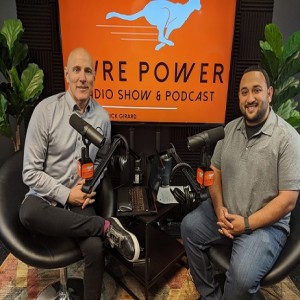
Thursday Feb 27, 2020
Thursday Feb 27, 2020
The value of being able to directly text or call a person you are needing to recruit for your company is staggering. Want people to give you the opportunity to recruit them? Then you need to contact them where they will respond. Hint: It is not through email or LinkedIn.
Today’s Quote:
"Our greatest weakness lies in giving up. The most certain way to succeed is always to try just one more time." - Thomas Edison
I’m Rick Girard and welcome to the Hire Power Radio Show. Our mission is to help Entrepreneurs and hiring managers to avoid costly hiring mistakes by identifying a specific problem and provide proven solutions to enable you to WIN the right hire. We share insights from top-performing rebel entrepreneurs, disruptors & industry experts.
Like our guest today: Shafiur Rahman, Founder & CEO of Chatterworks
Shafiur has been the right-hand to founders and has built out the operational infrastructure for several companies, including Airbus Aerial, Specright and Connectifier ( acquired by LinkedIn February 2016) . He has extensive experience driving the day-to-day and long term requirements to ramp up a successful, high-growth startup.
Shafiur’s new startup helps you reach potential hires with their personal contact information!
Today we are going to discuss
- Why direct contact is critical to your recruiting efforts
- What contact information is most important
- How to find the contact information of the people you need to hire
- Typical scenario - What most do… industry best practices
Why do we need to find people's contact information when hiring?
- Low likelihood of response rate through the LinkedIn platform.
- Most people are not daily or even weekly on LinkedIn
- Passive people are not logging on at all
- People respond to Text directly. Much more than email.
- Limited to what LinkedIn offers/shows
- Have to work under their platform
What data is most useful
- Social intelligence
- Personal phone, email
Rick’s Input
- Text messaging has the highest response rate
- Open & Response rates
- 45% SMS, 8% email response rates
- 98% of texts are read, compared to 20% email
- Text messages has a 750% response rate over email
How do we find contact information?
- Hire a PI
- Background Check companies
- Build your own tech stack
- Piece together the various social platforms and cross reference data
- Your own personal aggregation
- Super labor intensive
- Can waste 30-45 minutes on just one person.
- Can still not get their direct contact information
Aggregate contact information?
- Build crawlers
- Buy public data
- Find tools
- Only gives you listed information, like home phone, no email
- If you want cell phone info, you have to pay for it
- Whitepages.com
- ZoomInfo - just business data
- spokeo
- ChatterWorks
- Swordfish
Key Takeaways:
- First identify who it is you want to hire
- Then get there personal contact information
- Where people respond the most, like start with text messaging
- 3rd- have my messaging down to ensure I’m touching people the right way. Not selling them, how can you help them in a career, how your job solves there problems.
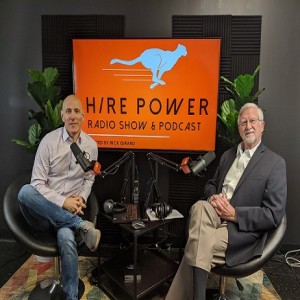
Thursday Feb 20, 2020
Interviewing for Skills is Today’s Coronavirus! with David Kinnear of Vistage
Thursday Feb 20, 2020
Thursday Feb 20, 2020
Everyone in a hiring capacity has made a wrong hire in their career. I believe that this is a direct result of hiring for skills first. Here’s the scoop, a person’s skills can change, but you can't change who they are. And technical abilities are not a clear indicator of passion in the work.
Today’s Quote:
“Values should underpin Vision, which dictates Mission, which determines Strategy, which surfaces Goals that frame Objectives, which in turn drives the Tactics that tell an organization what Resources, Infrastructure, and Processes are needed to support a certainty of Execution.” — Mike Myatt
Our guest today: David Kinnear, Executive Mentor & Group Chair of Vistage International.
Dave Kinnear is a Business Advisor, Mentor and Executive Leader Coach. Through his affiliation with Vistage Worldwide, Dave convenes and facilitates peer advisory boards of Business Owners, Company Presidents, General Managers and Chief Executives dedicated to becoming better leaders who make better decisions and achieve better results.
Dave is also an executive-to-executive mentor to Executive MBA students at the UCI Paul Merage School of Business and a coach for the Center for Entrepreneurship at CalState University, Fullerton.
Today we are going to discuss
- Why a skills-based interview is dangerous
- values alignment is critical
- The framework for a successful interview
Why do people interview for competency/skills?
- Competency is easy
- This is what people focus on
- Today's workers need mastery, purpose and autonomy
- Shared values aligns well with the way decisions are made within the company
- We all want to do what's right for the tribe
- The soft stuff is not easy.
- Most CEO’s don't know what the real values are
- Profitability is what is really valued
- Transparency on the financials are missing
- Management decisions are the values
- Culture is the way things get done around here
- The way things get done is by making decisions
- Decisions are made reflective of the values
How do we Hire for Values?
- Running, Knees, shoes analog
- Know what the real values
- Ask questions to determine the person’s values
- Uncover the person’s values
- How someone works with others and makes decisions
- Ask questions that validate the core values
- Let the silence do the heavy lifting!
- When they have the values
- Reveal the mismatch in what they have now and where you align
- Skills can be learned
- The person you want is not on the street
- Hire them
Rick’s Nuggets
- Design questions around the corporate values (Amazon's leadership principals)
- Ask behavioral questions and dig deep. This uncovers the truth about who the person is
- "Walk me through a time"... Then ask why, why, why?
- Do not ask leading questions
- Ask the question and shut up!
Key Takeaways
- · Values are the foundation of an organization's culture.
- · An organization’s leader has only one critical job, and that’s to actively manage the culture
- · The leadership team must believe in and live the values every day
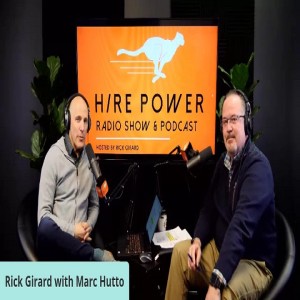
Thursday Feb 13, 2020
Thursday Feb 13, 2020
The truth is most of the good players are on the sidelines. Great people are inundated with mindless spam therefore most messaging is getting ignored. Here is the good news, Gallup reports that 7 of 10 people are open to something stronger.
Today’s Quote:
“Great people want to work on things that matter. Inevitably, a great person working on imaginary work will turn into an unsatisfied person.” - Jason Fried
Our guest today: Marc Hutto, Founder & CEO of Reveal Global Intelligence
Marc is the chief architect of Purpose-Driven Recruitment . This methodology focuses the talent acquisition process on the people who are hiring and being hired - as it should be. Revealing hidden and highly-valued talent in this way also aligns to Marc's stated vision for the company of delivering evidential value to every life we touch.
Today we are going to discuss
- Why you believe you can't find people
- The truth behind the myth (79 % of people on LinkedIn, polled, will not see a posting)
- A script to successfully find the people you need - A “pattern interrupt”
Why is the view that company’s can’t find people wrong?
- You can easily believe this because most people are not responding to job postings.
- Mindset - most people need to be approached.
- A lot of people approaching them
- A lot of noise, people not responding
- Only 21% of people are looking at a job posting
Reach out
- Outreach and response is the main challenge
- A lot of the same messages
- Get rid of the hooks and talk to the person
- Pitching the job is the wrong mentality
- Get into career coaching mode as quickly as possible
Rick’s Input
- Treat people all the same, regardless of where they came
- Hit people at their pain point first.
- What could be better?
How to recruit passive talent?
Mindset
- Approach people who did not come to you
- You have to be proactive
- Business owners and leaders take great care when investing in hard assets (equipment, supplies, inventory, etc.) - should we not have the same mindset when investing in a new colleague?
Reach out
- Don't pitch the job (it’s presumptuous)
- Digital video job description (digi-me.com) 1 minute
- Polite, professional, persistent - it differentiates
Coaching call
- Talk to people about them- their career/career drivers
- Look for the opportunity to provide career coaching
- Start a conversation around career drivers
Incumbent interview - document
- Why did you come here?
- Why do you stay?
- Challenges you encounter?
- Want someone to understand what it is like to work for your company?
Reasons why people stay (career drivers)
- Compensation & benefits
- Impact of the work
- Environment - culture, people, space,
- Personal & professional growth
- Leadership or management
Rick’s Nuggets
- On average 7-10 calls to get in touch a person today
- Write 5 email sequences
- Top Desires: Growth, Content of Work, Leadership
Key Takeaways:
- Hiring and being hired are big deals. Keep them humanized. Focus on Career Drivers.
- If you are an employer, you are in sales mode for top talent.
- Post and Pray has to give way to Polite, Professional Persistence.
- Purpose Driven Recruitment Toolkit: revealglobal.com/hirepower
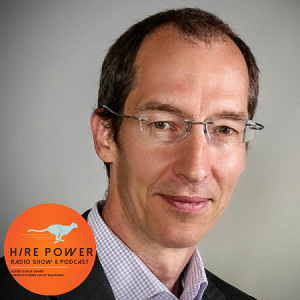
Thursday Feb 06, 2020
Thursday Feb 06, 2020
Reference checking is so important... yet so underutilized. Why? Because it is too time-consuming! But when you fail to reference check you are dramatically increasing the likelihood of making the wrong hire. On top of that, you are missing out on a potential recruiting opportunity
Today’s Quote:
"References drive the industry." - Mark V. Hurd
Our guest today: Yves Lermusi, Co-Founder & CEO of Checkster
Checkster is powering talent decisions of organizations and providers of staffing and HR services. The company aims to improve the world's productivity and harmony by increasing job fit and work achievement, as well as personal career satisfaction and fulfillment.
Yves is a well-known public speaker and a Career and Talent industry commentator. He is often quoted in the leading business media worldwide, and has been named as one of the “100 Most Influential People in the Recruiting Industry”.
Today we are going to discuss
- Why checking references is important
- Voice reference checks vs digital reference checks
- The framework for a successful reference check
Reference checking, what’s the issue?
- People don't do
- Or they do totally wrong
Why are they doing references wrong?
- Only speaking to people that are given
- Talking to 2-3
- Talking to over the phone (filtered feedback)
Digital advantages
- Digitally people are more honest
- People pretend to be their own reference
- Consistency in the questions
Rick’s input
- Design references to evaluate against company culture
- Ability to dig deep on the answers
How to do references right
- Peers or managers recently. In direct contact
- Speak to at least 4 references - the measurement of success 80% in making a good hire vs. just 2 references
- Ask the right questions
- Relevant to the job and non-leading, (leading the witness)
- “Would you rehire?”
- Starting broad and going specific
- Do it digitally
- Saves time
Rick’s Nuggets
- How are you able to question deeper to understand the motivation of the answer?
- Written referrals don't give you the ability to recruit the person
Key Takeaways:
- Get at least feedback from 4 relevant colleagues (relevant:recent profesional close experience)
- Ask predictive questions
- Do it digitally
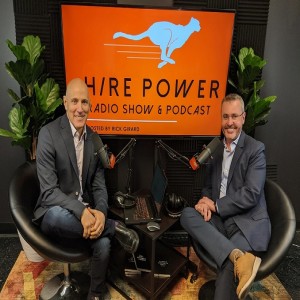
Thursday Jan 30, 2020
The Right Way to Advertise Your Jobs with Kelly Robinson of RedDot Media
Thursday Jan 30, 2020
Thursday Jan 30, 2020
Posting your jobs can be a very frustrating exercise. Especially when you receive little to no response. Or worse yet, you receive an onslaught of unqualified responses.
Today is all about how and where to post your jobs to attract the right people! So we are going to geek out on advertising and teach the right way to utilize postings in your recruitment strategy.
Today’s Quote:
“Advertising is an environmental striptease for a world of abundance.” - Marshall McLuhan
Our guest today: Kelly Robinson, CEO of RedDot Media
20 years on the staffing recruitment and recruiting technology.
RedDot media is a recruitment ad agency with a particular skill in programmatic advertising and helping companies socialize their jobs with our Paiger platform. Prioir to RedDot Media, Kelly founded Broadbean.com Inc 2001, which he sold to DMGT in 2008, launched in the US 2009, and lead the strategic acquisition by CareerBuilder in 2014.
Today we are going to discuss
- Why Job postings fail
- Different ways to advertise
- Steps to take to implement programmatic job advertising
Where do people fail while posting jobs?
- Spray & Pray
- Pay no attention to the content
- Not thinking about what the person really looks like
- What is an important Mindset?
- Treating people who apply the same as a direct recruit.
- People who apply are just open, not sold on your company
What are the different ways to advertise?
Post & Pray - what most do now!
- Programmatic advertising
- Rule based job posting
- Only paying for results
- Click bidding to get your jobs on the top of the listOnly paying for results
Rick’s input
-
- Need understanding of what needs to be accomplished
- Performance metrics
- Content rarely touches the individual (never answers “what’s in it for me”)
How to implement programmatic job advertising
- 3 ways to do
- Use an agency to do it
- Buy a system and DYI & hire someone who is dedicated to doing it.
- Effective in duration based advertising.
- Cost per view or cost per applicant
- Best for 20+ jobs per month
Steps to maximize your job posting
- 20 or less
- Java engineer
- One-offs- start with Indeed
- Zip recruiter is good because of their advertising
- 65 mil lookers a month
- Identify 2 of 5 skills and talk to them.
- Write a good job description
- Have a lot of conversations
How to maximize relevancy
- Job descriptions: Talking to about emotional factors
- Dependent on what and where you are looking for it
- Forget the application process.
- *treat people not like an application but like they are part of the conversation
Key Takeaways:
- And as Jim Collins said it’s the Genius of the AND versus the Tyranny of the OR. and embrace the "Genius of the AND.
- Writing job ads is a skill - get better at it, AND have fun with it.
- Understand and qualify your job description ****A good question is what is NOT getting done while you don’t have this person.
- Job Applications are people who have given you permission to have a conversation with them. Your job is to figure out together if they should quit their job and come work from you.
- It’s not all about saving money a 3,6% unemployment rate!
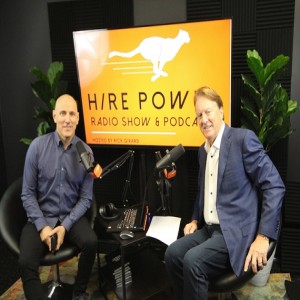
Monday Jan 27, 2020
Hiring for Intellectual Value Over Spec! with Scott Hamilton of ENPI
Monday Jan 27, 2020
Monday Jan 27, 2020
Today’s show is all about challenging your past behavior. What has worked in the past will not work in the future and this is especially true in hiring! Hire people who think beyond the job you are hiring for and give them runway to grow. This is the only way to spark innovation and propel the growth of your business.
Today’s Quote:
"None of us is as smart as all of us." - Ken Blanchard
Our guest today: Scott Hamilton, President & CEO of Executive Next Practices Institute
Scott is a well-known thought leader & speaker in the field of “next practices” improvement of executive and workforce performance for global “Fortune 5000” through emerging companies.
He is also the Managing Director of NextWORKS Strategy, a premier provider of strategy development, alignment, innovation, board effectiveness, and executive performance programs to middle-market companies. Both of these entities have been recognized by Forbes and the Orange County Business Journal as leaders in fields of innovation, INtrepreneurship and strategic transformation.
Today we are going to discuss
- Intellectual Value vs Skills
- Your talent innovation ecosystem
- 4 step process to maximize your
What are the blinders that entrepreneurs have
- Past behavior
- Curiosity about what is coming next
- Bigger picture
- Different domains other than your own domain
Why is it important that we hire people who can think above and beyond?
- The organization needs to remain nimble and adaptable
- Give the flexibility to innovate and grow
- Allow for managed risk
- Learning opportunities
How do we fix it?
- Stop hiring for the current problem. Why?
- Boxing yourself in
- Engaging the collective intelligence of the organization
4 Step Process
- First Question
- How have things been done in the past?
- What no longer makes sense?
- What can change?
- Reduce
- Eliminate or reduce the activity
- What Practices, processes or services can be eliminated in the organization?
- Raise
- What can be done to rise above the competition?
- Build it to a better service model
- Re-onboarding
- See what it is really like
- Create
- What can you create that is totally new
- Elevating value propositions
- Start doing ROI, customer/employee satisfaction, overall effectiveness
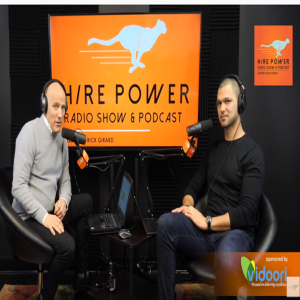
Thursday Jan 23, 2020
Interview Qualification is a Two-Way Street with Greg Toroosian of Elevate Hire
Thursday Jan 23, 2020
Thursday Jan 23, 2020
Each individual brings a unique perspective to every interview conversation. Yet most interviews focus on “what you can do for me” almost entirely from a skills perspective. People want to know what’s in it for them before they choose to engage with you.
Today’s Quote:
"Though we may have desires or bold goals, for whatever reason, most of us don't think we can achieve something beyond what we're qualified to achieve." - Simon Sinek
Our guest today: Greg Toroosian, Founder & Managing Director of Elevate Hire
Greg Toroosian founded Elevate Hire after more than a decade in the Talent Acquisition space. Having previously worked for startups, globally recognized brands, and recruiting agencies, He believes that recruiting and retaining talent is key to having a successful company.
Greg is an expert at qualifying talent for organizations which has led to successful hires for many clients in a variety of industries.
Today we are going to discuss:
- Types of qualification
- Plan of attack on how to effectively qualify people
What is candidate qualification?
- Definition: A quality or accomplishment that makes someone suitable for a particular job or activity
- Two types of qualification
Checkbox
- Asking yes/no questions
- Requirements focused
- Doing the bare minimum
- Ineffective because you are lying to yourself
Thorough
- Have a clear understanding about what the person is actually looking for
- Clarify the likelihood of acceptance of the job
- Fit for the company
- Answer the question (Is this a good candidate)
What's important for qualification?
- Look at profile (linkedin, resume)
- Longevity, career trajectory, companies/industries, titles
- Recommendations (linkedin)
How do we avoid having a checkbox process
- Mindset of the call: don’t go into every call wanting or being hopeful that this person will work out. Ask the questions that unearth what you really need to know.
- Conversational qualification calls.
- Ask open questions, ask scenario-based questions, and ask questions that will determine if this person is a non-starter.
- Listen carefully. Be strict and be honest.
Framework for Effective Qualification
- Firstly, you need a clear understanding of the role you’re interviewing for, its scope, the immediate need, and the future possibilities.
- Be comfortable in leading the conversation so you can get the questions answered that you need.
- Conversational and open questions with enough space for the person to really say what you need to hear.
- Have a form of the questions to be asked, know what you need the answers to be, but don’t read a script.
Key Takeaways:
- Build your own qualification form to use as the foundation for every call.
- Questions that unearth a lot:
- Why are you open to a new role?
- What are you looking for from your next role?
- Talk me through your current role and responsibilities. You can tell a lot about someone's role, their involvement, and their overall understanding of their craft by hearing them speak freely about it. Take notes and then clarify any points you need to.
- After telling them about your open position, ask them how it sounds to them as a next step? What specifically appeals to them from what you shared? Get them to sell the role back to you and to sell themselves as a candidate.
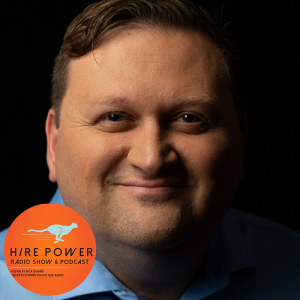
Thursday Jan 16, 2020
Thursday Jan 16, 2020
Making a strong hire starts with attracting the right people. Knowing who the right hire is the first step. But in order to attract the right people there needs to be a message that resonates with the individual and motivates them to respond.
Today we are talking about hacking your hiring through the use of communication profiles.
Today’s Quote:
"Hacking involves a different way of looking at problems that no one's thought of." - Walter O'Brien
CEO of Scorpion Computer Services and executive producer of the TV series Scorpion
I’m Rick Girard and welcome to the Hire Power Radio Show. Our mission is to help Entrepreneurs and hiring managers to avoid costly hiring mistakes by identifying a specific problem and provide proven solutions to enable you to WIN the right hire. We share insights from top-performing rebel entrepreneurs, disruptors & industry experts.
Like our guest today: Christopher Hadnagy, CEO of Social-Engineer, Inc.
Chris Hadnagy is a professional social engineer, author of 4 books, and keynote speaker. He’s the CEO of Social‐Engineer, LLC, a company who serves some of the globe’s largest organizations. Additionally, Chris provides free resources, including the world’s first Social Engineering Framework, via Social-Engineer.Org, and heads the Innocent Lives Foundation, a non-profit that unmasks anonymous child predators.
So Christopher knows hacking! Which makes Christopher a perfect expert for today’s topic.
Christopher, Welcome to the Hire Power Radio Show today!
Today we are going to discuss:
- Identifying the right person
- Crafting the right messaging to attract
- Logical steps to weed out the obvious
Problem
- Really bad hires!
- People look great on the surface
- Not showing up for work
- Quitting fast
Why am I having an issue getting good employees?
- *** realize how much time you spend on the back end when you hire with the wrong people
- Aftermath
- Lost over 100 hours and thousands of dollars
- Killed company morale
- Outline the type of person you want before you start interviewing
- Thinking about the work that needs to be accomplished
- Defining expectations up front
- Managing your own expectations- avoid unreasonable tasks
- Experience expected to have
Rick’s input
-
- Create messaging around the personality profile of a successful hire
- Pain, Desire & Impact
How do we fix it?
- Determine the best communications profile first
- Write the job description with keywords that attract the right people
- Describe the words and language to attract the right person.
- Detract the wrong people.
- Logic steps to weed out the obvious
- A list of questions to determine the right fit, video interview to whittle down to 3
- Give the disc test - confirm communication style
- Weed out the wrong cultural fit
- Confirm what is really needed with who the person is
How does one determine the right messaging?
- Disc profiling roles (general)
- D- management, leadership, - Aware D - understands how they communicate
- I- Sales, public speaking, Training
- S- HR, support role,
- C- Accounting, office management - detail & organization
Rick’s Nuggets:
- One size fits all messaging does not work
- Create messaging with a call to action to minimize
- Performance metrics attract the right people
- Plan and put process in place
Key Takeaways:
- Time invested in the prework saves thousands of dollars for the company
- Define what it is that a person must have
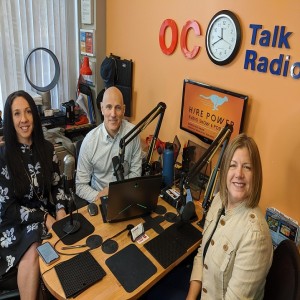
Thursday Jan 09, 2020
Business Aligned Hiring Roadmap with Kelly OConnell & Shelley Iocona of ON ITS AXIS
Thursday Jan 09, 2020
Thursday Jan 09, 2020
We all get how impressive the hire from a name brand company might be. However, more often than not, making the vanity hire turns out disastrous for both parties. Why?
Too often hires are made based on a particular set of skills or a person’s pedigree. Not taking into account the importance of cultural alignment or the objectives of the business. Your hires should be made on the basis of what is best for the company backed by evidence of performance.
Today we are talking about how to Accelerate Company Growth with a Business Aligned Hiring Roadmap.
Today’s Quote:
"I've found that luck is quite predictable. If you want more luck, take more chances. Be more active. Show up more often."
- Brian Tracy
Our guests today: Kelly OConnell, Executive Vice President & Shelley Iocona, Founder & Principal of ON ITS AXIS.
ON ITS AXIS is a Product and People firm. We help organizations validate new digital product ideas and build the teams that allow them to successfully take them to market.
They have found that just as the launch of a successful product begins with a customer-centric roadmap, Talent Acquisition that is grounded in understanding how a company can most efficiently deliver client satisfaction and adapt to changing client needs is critical to a company's ability to efficiently scale.
Today we are going to discuss:
- The common mindset and the problems that are created
- The importance of building a business objective roadmap
- How to create your own roadmap
Why is this important?
The strength of the company is the people delivering the product in the marketplace. The winning company will have the strongest team. When managers struggle to hire it directly impacts team productivity and company growth potential.
It is important for organizations to approach hiring with a business objective roadmap rather than focusing exclusively on skills and perceived fit.
What challenges Hiring Managers face?
The most common challenges we observe in the market are:
- adhoc hiring: where a manager is under pressure to make a hire in response to an urgent perceived team need
- confirmation hiring: where a manager tries to identify a replica of their own profile or the profile of a successful team contributor
- cultural fit exclusion: where a manager rules out a candidate based on their subjective perception that they won't fit into a current team culture.
Although understandable, particularly for high growth teams, hiring to a standardized and generic target profile is problematic because too much of a focus on matching skills and current team fit can lead to uniformity in the workforce that can unintentionally limit both the potential candidate pool and the potential for innovation in the workplace.
These challenges can result in several problems including
- Endless interview cycle with no hires
- Offer turn downs
- High Company Turnover Rates
- The incorrect perception that a company needs A LOT more developers or Sales People etc. to achieve goals which can adversely impact profitability and growth
Additionally, there is often a corresponding negative impact to the existing team culture when organizations approach hiring in this way:
- Internal Team Conflict
- The current team is overworked and under pressure.
- Existing people feel they are doing more than their fair share of work
- Poor Team Productivity and Missed Deadlines
- Perception that the current team members are the “wrong fit” for the company
What needs to be in Place?
A structured, and efficient interview process.
Align hiring triggers to business model objectives, structure team OKR’s to directly correlate to key company goals and at each hire to modify the generic role job description and interview scoring rubric to address the most essential team gap at that given point in time.
This doesn’t mean that companies should ignore skills and culture. They are important but we see them as part of the larger talent acquisition and internal performance management plan.
Companies that most rapidly grow, are capable of executing nimble pivots in response to changing customer expectations.
Team members must be able to grow and evolve within the company. Rather than hiring for proficiency in a laundry list of current skills, instead, we encourage companies to establish predictive hiring indexes that will help them to assess a hires potential to learn and evolve to changing expectations within the company.
How do we fix it?
- Define the core success factors that allow you to best serve your users
- Identify the key technical and soft-skill gaps in your core team
- Leverage a Data-driven approach to both team composition and hiring capacity (Swarmvision- profiling to predict innovation capacity for teams- this is not personality profiling
- Create a regular cadence for review of your talent acquisition roadmap
- Provide all employees with a clear path to career development & professional growth
We encourage clients to Hire to fill the most impactful skill-gaps on your existing team and be willing to transfer internal team members into new roles that better serve them and your business objectives.
Creating a business aligned hiring roadmap not only helps organizations avoid several of the pitfalls previously shared but it also has the added benefit of helping organizations attract and retain both gen Z and gen Y employees.
Rick’s Nuggets
- Structured Hiring process wins hires!
Key Takeaways:
- Embrace a structured interview process that is based on a strategic hiring roadmap to avoid pressured hiring decisions and confirmation bias
- Just as you evaluate your company business plan at a regular cadence, develop a regular cadence for review of your organization's talent acquisition plan
- Rather than matching employees to a current team profile, view each hire as an opportunity to complement the strengths of your existing team and to support your most critical team business objectives. This will allow your organization to evolve to changing customer sentiment.

Friday Jan 03, 2020
Hiring People Who Are Outside Your Comfort Zone! with Aaron Elder of Crelate
Friday Jan 03, 2020
Friday Jan 03, 2020
It is all too common to look for the person who brings the skills you deem necessary for your role. But the person who brings all the skills may not be the best person in the role. There are a lot of people who are in adjacent industries or sitting on the sidelines who are open to an opportunity like yours.
What does it take to find great people? Looking past the skills for evidence of success that will be transferable to your company. As we all know, past performance is a key indicator of future performance.
Today’s Quote:
“Take a chance! All life is a chance. The man who goes farthest is generally the one who is willing to do and dare.”
- Dale Carnegie
Our guest today: Aaron Elder, Co-Founder & CEO of Crelate
Aaron is a serial entrepreneur with 4 successful products, 3 companies and 2 exits under his belt. He is a designer, turned coder, turned CTO, turned CEO who is passionate about creating products people love and make the world better.
Crelate exists to help businesses continuously align people with opportunities. Aaron has a passion for taking a chance on people who are changing careers - giving people a shot
Today we discuss:
- Hiring outside the norm to combat the talent shortage
- a recipe to successfully hire
Solution to the talent shortage
- Taking an age blind approach
- Considering the skills level
- Not just a blind hire
Challenges?
- Casting a wider net- seeing through things
- Opening the holes in the net
- Look past skills to the ancillary skills
- Career shows you as a non-fact (switching careers-coming in as a jr person). Measure people based on risk rather than
- A propensity for learning new things, being innovative and growing, you will probably be able to bring that to the table
Issue of Compensation
- Is a pay cut really realistic? Taking a shot
- Until you talk to them, you don’t really know.
- *** Training and investment need to be real. The organization needs to be all in on people development
Rick’s input
- Look for transferable skills
- Adjacent industries
- Evidence of success
How do we fix it?
- Finding the people who are performers and not just seat fillers
- indicator of career changes,
- Tenacity & grit, raw materials
- Look for evidence of past success
- Hide Easter egg’s in the job post.
- Questionnaires
- Invest in Recruiters- matchmakers
- Have more conversations with people and look past the resume
- Internal training programs
- The long game is the only solution he knows.
- Short term road bumps but long term it is an investment in an approach.
- Be self-aware of the game
- optimize for the long game (bring investors on board)
- Looking to solve a long term problem - at least a 2-year problem
- Education & training which require intense focus and investment upfront.
- Benefit? -the path for retention, earned loyalty, path for mutual benefit
- If you are not growing, you will have a hard time keeping people who want to be growing
- Take more chances on people who do not have ALL the skills
- Creating training, review process that career ladder, reviews, culture for people to enjoy
- Invest in systems to automate points 1 & 2 more possible
Key Takeaways:
- Solve the talent gap/shortage by being able to take chances on people, give them a chance to tell their story and see if it fits. Look past skills to underlying achievements, velocity, grit, etc.
- Invest in the long haul - internal learning, time, training, the culture of personal growth and achievement.
- Do what you can to make #1 and #2 more efficient. That means the right tools and processes that fit those goals. Not work against them.
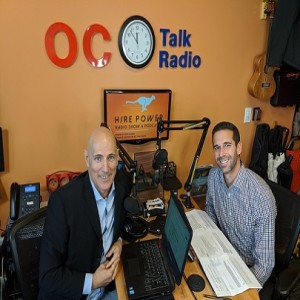
Thursday Dec 12, 2019
Is Fractional Leadership The Key to Startup Growth? with Matt Spooner of GigX
Thursday Dec 12, 2019
Thursday Dec 12, 2019
Seasoned leaders are out there and they are willing to work with your startup at more than just an advisory level. They are called fractional leaders and they are easier to find than you might think.
Consider the possibility that in this hiring market, seasoned veterans maybe your best hiring option for building your company!
Today’s Quote:
"We came into a broken world. And we're the cleanup crew." - Kanye West
Our guest today: Matt Spooner, Fractional Chief Business Development Officer for GigX
Matt has nearly two decades of experience within the arenas of Marketing, Sales, Business Development, and Account Management. He has built and led high-performing teams within both the for-profit and nonprofit sectors. His cross-industry, cross-function experience allows him to approach opportunities and issues from a unique and valuable standpoint.
Fun fact, Matt is an avid endurance athlete who has completed 3 ultra-marathons!
Prior to joining GigX, Matt worked in the world of retained executive search. His role as a Vice President at McDermott & Bull has kept him close to hundreds of C-Suite leaders and hiring managers. Matt is plugged into the senior-level executive community - he understands what they bring to the table...and how organizations can best attract and leverage them.
Today we are going to cover
- The benefits and drawbacks to fractional leadership
- where to find fractional leadership
- How to evaluate and Hire them
Problem
What is Fractional Leadership?
Why is this important?
- Budgetary issues and/or concerns frequently limit companies from hiring senior-level leadership; This is an acute pain point for SMBs and early-stage organizations
- Frequently, these companies don’t consider and/or realize that their issues re: talent can be solved by exploring “independent” options such as fractional talent
- Even when these companies have a desire to explore fractional leaders, it’s challenging for them to find this type of talent
- There are a lot of misconceptions re: senior-level talent. Here are a few:
- SMBs and early-stage companies can’t afford them
- They only want full-time roles
- They’re too set in their ways
- They’re not as nimble
- They’re not current
How do we fix it?
- Fractional talent is the answer
- Why it is beneficial?
- Most fractional leaders are senior-level executives who’ve pivoted in their careers and are now serving multiple organizations simultaneously
- Fractional leaders bring their numerous business connections/relationships with them; In many ways, they serve as de facto Business Development professionals for the organizations they work for
- They show-up on Day 1 with an immense amount of acumen and skill
- They’re less of a “flight risk,” as their desire is to serve on a long-term basis
- Their experience, talent, and connections allow them to do the work of multiple team members
- Companies can get the acceleration and acumen that they need, and only pay a fraction of the price for it
- Steps to hire someone
- The first (and most important) step: Pursue the in-transition population! Why? Because this population represents a talent market that’s highly-skilled and readily-accessible, yet largely underutilized.
- The second step: Know the time commitment that you’re asking for. Why? This will show the fractional executives you speak with that you understand one of their top criteria for engaging with a prospective client: How much of their “bandwidth” are you asking for.
- The third step: Collaborate on expectations. Why? Because you’ll only be engaging with your fractional executive during a portion of any given week/month/year, you’ll want to have clear KPIs that you’re moving toward and monitoring. Similarly, you’ll want to set expectations around how often you’ll be “seeing” each other - whether it’s in-person and/or via a platform like Zoom, Skype, or FaceTime
Key Takeaways:
- Fractional leadership is an affordable and powerful way to bring C-Level execs into your organization
- There are thousands of overlooked, undervalued senior-level leaders that can be leveraged immediately for fractional roles
- The key to success with fractional leaders: Create clarity early-on re: time commitment, KPIs, and when/how to connect
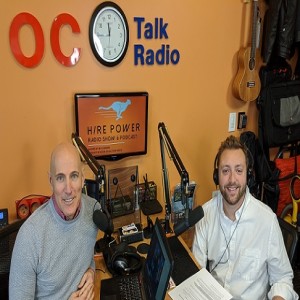
Thursday Dec 05, 2019
How to Pipeline Talent Without a Talent Brand with Jack Copeland of Staffing Future
Thursday Dec 05, 2019
Thursday Dec 05, 2019
How are you going to attract the strongest talent for your company when people have no idea who you are? The truth is, you are not! Passive talent and those who are not on the open job market will just ignore you because you are just another me-too company.
This is why you will rely on the “I know someone” method to hire Your best source for talent is referrals. What if you can gain awareness before you reach out to someone
Today we are talking about How to pipeline talent when you don’t have a talent brand
Today’s Quote:
“Brand is just a perception, and perception will match reality over time. Sometimes it will be ahead, other times it will be behind. But brand is simply a collective impression some have about a product.” - Elon Musk
Our guest today: Jack Copeland, Founder & CEO of Staffing Future
Staffing Future, a website development, and technology stack consultancy, with expertise in building, developing and managing technology solutions. The team has built over 600 staffing Agency websites and deployed innovative technology solutions with a multitude of third-party apps to create a holistic sum of their parts.
Jack has worked and consulted with dozens of recruiting software providers who are inclined to augment and develop the industry, they include top tier originations like CareerBuilder, and Tracker RMS.
Today we are going to cover
- What is a talent brand & why it is important
- Framework to build your talent brand
What is a talent Brand:
The message you want to provide to potential talent about who you are, what it’s like to work for you and why they should work for your company.
What’s the difference between a proactive and reactive Talent Brand?
Most small and medium companies don’t even think about what their Talent Brand is but a proactive Talent Brand is taking the time to understand your message, providing a platform for potential hires to engage before speaking to you and pipe lining potential hires.
Problem
- What is a reactive talent brand:
- Persuade people why you are the right company to join
- You are selling to them
- Happens late in the game
- Spend money to get people through the door
- Eliminated access to Heavily sought after talent
- Not responding, applying or know you
- No idea who you are or your value
- You have no perceived value
Rick’s input
- Talent brand is not as important as answering “what’s in it for me”
- About solving an individual problem
How do we fix it?
- Optimizing the website to maximize attraction offering a place to engage for potential candidates
- Solidify your message around who you are, what it's like to work for you and the ethics and values of your business, make sure your management team and business goals align with these internally
- Identify your target ‘finite’ talent and implement strategies to engage and nurture proactively
What are three practical things I can do:
- Understand who you are? Take the time to evaluate your business. Why would I want to work here? Why would I want to stay here? What kind of people are your looking to engage and fit with your culture? How can you retain and attract them. What kind of people are not a good fit? What is our culture and what do i want out culture to be. Summarize this
- Provide a platform for people to engage on your social and website, allow a place for people to understand your business without talking to you and your team. You have no idea who isn't taking your call, applying to your jobs or responding to your recruiters. It’s a marketing exercise to engage potential buyers just like the product you sell. If you have this is can help your convert taken to the top of the funnel if you don't have this it's a red fag.
- 3. Be proactive. For most SMB companies there is a finite resource of available talent in their location and market. E,G Python developers in Portland. How can you get them to understand you exist? Connect with potential hires on LinkedIn before you ate hiring at a C-level and have an open door policy, push out social content but focusing on working for your company and it’s values, attend or host career fairs and speak to relevant colleges. Find a meaningful way to tap into your employees network.
Rick’s Nuggets
- Perks, benefits and free lunch are not attractors
- Companies rely way too much on perks to retain people
- People development needs to be the focus
- Humanize the messaging
Key Takeaways:
- Understand who you are what your message is
- Provide a platform for highly sort after talent to understand who you are
- Be proactive in pipe lining and reaching your core talent in most cases it;s a finite resource.
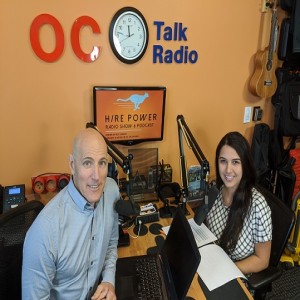
Friday Nov 29, 2019
Referrals Vs Applicants with Ladan Davia of Beeya
Friday Nov 29, 2019
Friday Nov 29, 2019
According to Linkedin, the #1 way to discover a new job is through a referral… and referrals are the top source of quality hires.
Look, there are good people responding to posted jobs but most likely, they are being passed over. Why?
Our guest today says “The answer is serving up less to maintain more” when looking for talent. Using AI and machine learning can help target the right applicants to diversify your talent pool to find the right hire.
Today’s Quote:
“If opportunity doesn’t knock, build a door.” - Milton Berle
I’m Rick Girard and welcome to the Hire Power Radio Show. Our mission is to help Entrepreneurs and hiring managers to avoid costly hiring mistakes by identifying a specific problem and provide proven solutions to enable you to WIN the right hire. We share insights from top-performing rebel entrepreneurs, disruptors & industry experts.
Like our guest today: Ladan Davia, Founder & CEO for Beeya
Beeya, is a meta-search engine for jobs that hosts all jobs on the internet, in one place. It is the only platform that uses artificial intelligence and machine learning to accurately match candidates to jobs they are qualified for, solving the faulty keyword issue other online platforms serve users.
Ladan has been featured in publications such as the New York Times, Fox Business, and The Wall Street Journal, and is using her influence to help young entrepreneurs, especially women, break through the tech industry.
Which makes Ladan a perfect expert for today’s topic.
Ladan, Welcome to the Hire Power Radio Show today!
Today we are going to cover
- Referrals vs. applicants -benefits to each
- Other options for hiring
- How to level the playing field and bring the right talent forward regardless of where they came
Why it is wrong to focus on referral candidates?
- Unfair advantage to people who are connected
- Not based on merit
Why employers are losing good people?
- Just because someone is in transition does not mean they are bad
- Referrals are not necessarily the best hire
Why it costs employers more?
- They are not hiring the right people
- Taking the easy out by hiring the easy way.
Rick’s input
- Time is the big factor here
- Referrals take less time and are partially vetted
- Not putting the right amount of diligence in the interview process
- Other options
- 3rd option - targeted recruiting
- More time-intensive, allows you to stack the deck with A-players
How do we fix this hiring issue?
- Different ways of filtering applicants
- Keyword filtering does not work (no buzzwords)
- Needs to go
- What do we focus on then if not keywords??
Time issue?
- How to replace the keyword with AI & ML
- Challenges: the AI can become bias
- Need to eliminate name, age & gender
Rick’s Nuggets
- Applicant Filtering
- Performance metrics in the job description
- Eliminate buzzwords
- Call to Action in the JD to self filter… answer to 3 questions
- Time issue
- Utilize the phone screen
- 30-45 minutes will save hours in the long run
Key Takeaways:
- Look for alternative ways to hire and stay away from a keyword match
- Don’t be so open to referrals. Open your mind to other people
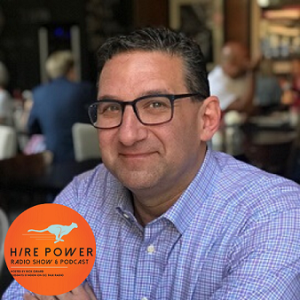
Thursday Nov 21, 2019
Thursday Nov 21, 2019
Telling a story is the quickest way to gain a person’s attention. The challenge in recruiting is telling a story that is compelling to the person you need to hire. And to top it off your story is just like everyone else and it is all about you!
What if we wrote each story differently than everyone else. Would we get better results? Damn right you will, and today my guest and I are out to prove it!
Today’s Quote:
"Storytelling is the essential human activity. The harder the situation, the more essential it is." - Tim O'Brien
Our guest today: Michael Goldberg, Founder & CEO of Hiring Transformed
Recruiting Strategist, Talent Finder, and Hiring Manager Whisperer all describe Michael who advises and coaches Talent Acquisition Leaders through roadblocks. The biggest obstacle is the ability of both recruiters and Hiring Managers to tell stories that are authentic and engaging. Michael also assists talent organizations with strategies to increase productivity, create strong recruiter/hiring manager partnerships, and lead change management initiatives.
Today we are going to cover
- The importance of storytelling in recruiting
- How to tell a better story and the framework for recruiting success
Why is storytelling important?
- Give me people now, make sure they are qualified and let’s just get them in the door and we will be able to close them.
- Don’t take the time to engage, just jump in and let’s go
- Don’t know how to kick off relationships.
- Jump right into it about the position
- Most people are not responded
People don’t respond to your messages... Why?
- Very overwhelming
- 4-5 times a day
- Information overload
- The same exact message
- Timing
- Area of interest
- Miss-targeting, misinformed
Rick’s Input
- Text, email, social feeds (paid media)
How do we do it?
- Start with a Story
- The story is told voice to voice!
- Humanize it
- Don’t run the story at 30,000 feet
- Capture their attention in a job posting or messaging
- Could be done as a video or as a blog
- Goal is to get to a phone call
Structure of the story
- Create the Hero- someone within the company
- A successful employee
- Should be a peer
- Makes it more relatable
- Mission or goal and share the obstacles are/were (targeting)
- Immediate and concrete to create rapport to create a connection
- “Have you been in a situation like this before?”
- Resolution (get over the obstacles & hit goals… or it didn’t work out, what would you do differently
- About showing, not just telling
- “Imaging yourself just completing X. You have worked with Sally and Joe and were able to overcome these major obstacles. You were able to deliver X with your team....Like selling a car “Imagine yourself behind the wheel of…”
Rick’s Nuggets
- The story should not be about you
- Try to make the person you are trying to recruit the hero
- Design the story to a specific pain that the person may have
- Make it relatable to that specific person
- Tool for crafting messaging
- Crystal Knows- messaging
Key Takeaways:
- Build trust through strategically crafted stories and will help recruiters differentiate themselves from others.
- Storytelling can take different forms depending on where the storyteller plans on sharing info. Videos, Blogs, & Social Media posts but videos prevail because it is the best way to create trust between the recruiter and the candidates.
- Storytelling should be told throughout the recruiting process. Not only by recruiters but by hiring managers and would-be peers
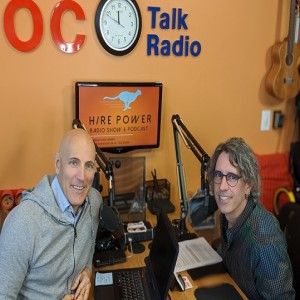
Thursday Nov 14, 2019
How to Really Evaluate & Hire Technical Talent with Aaron Cooley of Kunai
Thursday Nov 14, 2019
Thursday Nov 14, 2019
We’ve all done it, hired the person who looked great on paper because they seemed to possess the skills we needed. Only to have the hire turn out to be a major disaster.
Here is the truth: Technical resources have a high failure rate because of how they are interviewed. I am going to argue that Assumptions and expectations alignment is where we fail.
Today is about how to evaluate and hire strong technical talent by uncovering the Truth.
Today’s Quote:
"Talent without discipline is like an octopus on roller skates. There's plenty of movement, but you never know if it's going to be forward, backward, or sideways." - H. Jackson Brown, Jr.
I’m Rick Girard and welcome to the Hire Power Radio Show. Our mission is to help Entrepreneurs and hiring managers to avoid costly hiring mistakes by identifying a specific problem and provide proven solutions to enable you to WIN the right hire. We share insights from top-performing rebel entrepreneurs, disruptors & industry experts.
Like our guest today: Aaron Cooley, Lead Consultant - Security & Mobility for Kunai.
Aaron Cooley is senior technical consultant at Kunai. His specialties include high security backend applications, mobile applications, and applications that leverage video. Over his nearly 30 year career in Silicon Valley he’s worked at companies both large and small, to build teams and deliver everything from the first Java enabled handset, to Yahoo’s video player, to secure data processing for the world’s largest accounting firms. Aaron has hired hundreds of engineers throughout his career which makes Aaron a perfect expert for today’s topic.
Aaron, Welcome to the Hire Power Radio Show today!
Today we are going to cover
- How to identify & evaluate strong technical talent
- How to interview and Hire the person you company needs
Why do we fail in hiring technical talent?
- Arbitrary requirements… pass the technical coding test but failed miserably when they were hired.
- %of false positives
- & false negatives
What to be looking for?
- Desire is way more important than initial skillset!
- Really want the job, you have to jump on that
- In 3 weeks they will know what they need to know for the job
What to Avoid
- Do you know what I know? You want people who know things that you don’t know.
- Don’t do coding quizzes … it is about you, not the other person
- Don’t hire an ‘Architect’ that doesn’t write code every day. A good technical lead is 100% hands on every time, but many ‘Architects’ are actually technical product owners. They only understand technology from the perspective of a customer. They are great at making diagrams, and requirements, not great at leading technical teams to implement solutions.
Rick’s Input:
-
- Resume Bias
- Assumptions!
- Look for transferable skills, not skill lists
- Years of experience doesn't really matter
- Impact- What have they REALLY accomplished?
- Resume Bias
How do we fix it?
- Start with the resume
- What did they do
- Progression
- Are the things they have done relevant to you
- Looking for the pattern of starting & delivering
- Interview
- Skip the coding quizzes
- Make the interview about them
- What exactly did YOU do?
- Day to day work… detail it out! Dig deep
- Individual contributor vs. lead engineer
- IC focus on tasks that someone else defined. Great at delivering but not the best person to drive things. Documentation not important to this person.
- Lead Engineer: will see the need for documentation and they’ll encourage others to do the same. Comments on the code, write the new code and will see opportunities to write new code through documentation.
- All engineering like writing new code!
Two sides to the interview
- You selling to the person
- Ego in the room
- Finding out if the person is a match
- Leave your ego out of the room
- Find out what the person has really done
- If your interview process it that broken, I don't want to work for your company
Rick’s Nuggets
- Resume
- Work history
- What was accomplished. Evidence of impact
- What did you do?
- How did you do it?
- What were the results?
- Interview
- Utilize the phone screen!
Key Takeaways:
- Skip coding quizzes
- Architects and technical leadership NEED to write code!
- Make the interview about the person and dig deep with questions based on experience. What someone has done before is the best predictor of the future

Thursday Nov 07, 2019
Thursday Nov 07, 2019
Startups suck at choosing recruiting partners!
There is no magic button to push to have candidates pop out for your roles. Before you hire, put the same thought and care into your recruiting strategy as you would into every other aspect of your business. Just having a strategy will dramatically increase your chances of landing great talent as opposed to just hiring those who are ok.
Today’s Quote:
"It is rare to find a business partner who is selfless. If you are lucky it happens once in a lifetime." - Michael Eisner
Our guest today: Amy Arenz, Founder & CEO of Concero Search Partners, LLC
Amy has been in the search and placement industry for more than 25 years. Due to the high demand for her services, Amy founded Concero in 2010 to increase resources and improve the capacity to better accommodate her many clients. Concero specializes in recruiting sales, technical and go to market talent for high-growth, private and publicly listed technology companies.
Show highlights:
- Why picking the right partner is so crucial to your business’s success
- Different types of recruiting options & What to look for your particular situation
- How to uncover if the recruiting partner is right for you
Why is it important to choose a recruiting partner?
Time Savings:
- Too much on your plate
- Recruiting is kinda done
- Not really knowing what is needed
- Grouping too much profile into one person… people that don’t actually exist.
- Create more work when you use multiple firms.
- Confusing and burning the market
- Internal recruiters become process babysitters
What are the options?
- Hire multiple firms, Hire an FTE, Hire a contractor, Hire a single partner
- How to determine your needs
Challenges in
- Single Partner vs Multiple Partners
- Single Partner Advantages:
- Learns Company Brand
- Works with the leadership team that they probably hired
- Develop processes that can then be utilized
- Broad # of roles - can you fill lots of different positions or just one specialty
- Leveraging historical experience
Rick’s Input:
-
- More is better is wrong
- Retained vs Contingent
- Dependent on the level of engagement required
- Higher touch and value in a retained partner
What to ask to determine the right fit for your company
Reporting & Data
- Question: How will we know what effort has been put into our search(s)?
- Transparency of Process
- 3-4X pipeline
- Weekly reporting
- What’s in it for me?
Experience and expertise in the space
- Question: What experience do you have in our space? What recruiting tools do you use?
- Not educating the firm on the basics of what you do
- Have a network
- Come in and ramp quickly because of industry niche
It’s not just hiring
- Question: Do you have experience in helping a company set up a recruitment process?
- Job description
- Interview process / candidate experience
- branding/messaging
Rick’s Nuggets
Additional questions to ask
- What problems do you best solve?
- What does your ideal client look like? (independent of our company)
- What are the metrics to best define our expectations
- What is your Interview to placement ratio- Every good recruiter knows this!
Key Takeaways:
- Find a recruiting partner that provides transparency and gains your trust!
- Don’t fall into the trap of the more recruiters the better
- Dig into a recruiting partner’s expertise functioning in non-hiring support roles such as recruiting process design and setting up post-offer onboarding
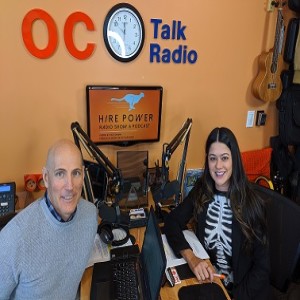
Thursday Oct 31, 2019
Thursday Oct 31, 2019
In honor of Halloween, we are sharing interview horror stories. We all have heard campfire stories of a crazy interview or even a scary hire. Today we are going to help you identify crazy on both sides of the coin to help you avoid a tragic nightmare.
How not to get hired or have someone accept your job offer
Today’s Quote:
"If God treats you well by teaching you a disastrous lesson, you never forget it." - Ray Bradbury
Our guest today: LeiLani Quiray, Founder & CEO of bethechangeHR
LeiLani has a fiery passion for both Human Resources and philanthropy. She believes people are a company’s most valuable asset and they should be cared for as such but no only on a level where the business truly cares but a quantifiable basis where we measure the effectiveness of the programs we put in place to foster a healthy work environment.
be the change HR, Inc., a conscious company and social enterprise, provides fractional HR executive support, strategy and service to businesses in any facet of HR from pre-hire to post-term and everything else that happens in between.
"Be the change you wish to see in the world." - M. Ghandi
Yup...she's doing just that!
- Scary Things people do in interviews
- What scares People from your company
- Avoiding your own horror stories
Warning signs of an upcoming bad interview
- Showing up late, without a phone call
- Typos in the resume- the devil is in the details
- customer experience
- fast paste environment
- Heavy Perfume
Two Stories
- Schwane Schwiley
- Rejection Letter & his response (I have one of the emails!)
- “My Truck was Stolen (and hit by a train) - A case of a negligent hire
Rick’s Input:
Company Fails
- Lack of clarity & setting performance metrics
- Constant re-scheduling
- Unstructured interview process
- Arrogant interview process
- Setting the environment to maximize a person’s performance in the interview
- Group whiteboard test designed to make you crack
- Adversarial
- Erase work while answering questions
Two Story Conclusion
- Schwane Schwiley
- Swifter involvement to protect employees (myself)
- Crazy is out there and you can’t control it
- “My Truck was Stolen (and hit by a train) - A case of a negligent hire
- Background checks are key
- Overlooking criminal history = negligent hiring
What do we need to pay attention to?
- The frame of mind (desperation, urgency)
- Over aggressiveness
Rick’s Nuggets
- Diligence in the phone screen
- Uncover the truth & the crazy
- Focus on the person, not the skills
- Skills-based hires breed horror stories
- Pain, Desire & Impact
- 3 behavioral-based questions designed to get under the hood
- Beware: taking credit, playing well with others & the blame game
Key Takeaways:
- Watch out for warning signs in the very beginning
- Sometimes sh!t just happens but you MUST take action quickly
- Background checks are important!
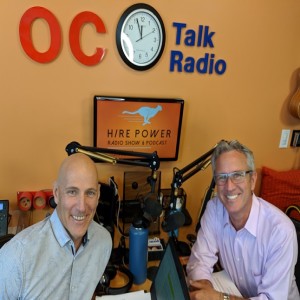
Thursday Oct 24, 2019
Thursday Oct 24, 2019
The purpose of the interview is to get the truth of who a person is and how they can bring value to the business. Common or conventional tactics do very little to do more than scratch the surface of the individual and so we still make hiring decisions based on likability and bias. Which is why we make bad hires!
The questions that you ask, are the questions that hurt you. Because they are unimpressive and do very little to showcase your organization as outstanding.
This show is proudly sponsored by Vidoori
Today’s Quote:
“Experienced managers interview to qualify. Inexperienced managers interview to disqualify” - Mark W Boyer
Guest Bio:
Robert Davis is the CEO of Communities for Cause. He is a seasoned CEO and entrepreneur who enjoys the challenges involved in trying to run and scale companies. Building the structure and creating the company culture required to commercialize a company's passion and grow business by turning great ideas into concrete, actionable steps that yield revenue, repeat customers, and increased cash flow.
I’ve always been a transparent person who doesn't shy away from conflict. I find great satisfaction in working with teams to identify what may be missing and addressing those challenges head-on to effect positive change and rapid evolution.
Show Highlights:
- Preparing for the interview
- Conducting the interview
Why is it important?
- Interviews are riddled with assumptions - king of all F-ups!
- Creating a judgment by the assumption
- Bias
Interview preparation
Create questions on the front end and determine “why” you are asking that question
- Filter down to the questions the most applicable
- Taylor the questions specific to the position
- Wants don’t count in the interview process
Qualifications
- Personality- can be a qualification
- Make sure there is a fit
- Skills/experience
- View of where you want someone to go from and to.
- Growth, mutual path and where the person will fit
- Remove likability from the ultimate decision
Preparation
- What does the business need?
- Align with company values
- Prepare questions designed to understand WHO the person is
- Amazon Behavioral method
- Do not use the resume as your guide!
- Prepare the interviewee on what to expect in the conversation!
Conducting the Interview
- Don’t treat interview casually
- (no cup of coffee at Starbucks), or meet for dinner alone.
- The Start and the stop need to be formal
- Perpetuate bad interview practices unknowingly
- Group meals are fine
- Personal questions- don’t ask (anything about personal lives) If they share, fine
Rick's Nuggets
Interview
- Be organized!
- Put into practice a formal structure, stick to the time, provide feedback
- Structure
- 3-5 people for onsite, 45 minutes per person
- Predetermined questions 3-4 max
- Challenging & Take out of comfort zone
- Eliminate questions that elicit canned response
- Behavioral questions are the most revealing… follow up with why, why, why?
- Amazon does it!
- Sample Behavioral question
*Do you consider yourself to be Lucky? (Positive or Negative outlook on life)
- Explain
- Or Why?
Key Takeaways:
- Be clear and concise with yourself on the information you need to extract
- Don't make it very personal from your perspective
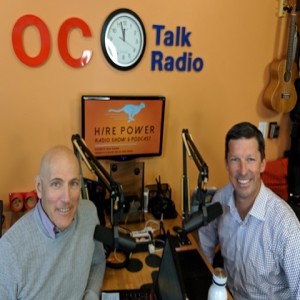
Thursday Oct 17, 2019
Thursday Oct 17, 2019
Founders, the quickest way to attract investment is to already have a team in place and the wheels in motion. People will join your startup prior to raising capital when they are committed to you as a leader and the mission of the company.
You do not need money to hire exceptional talent. You need to know who the business needs first. Then bring value to them personally and/or professionally based on their pains & desires.
Today’s Quote:
"Teamwork makes the dream work, but a vision becomes a nightmare when the leader has a big dream and a bad team."
- John C. Maxwell
Our guest today: Carey Ransom, President of the newly formed OC4 Venture Studio & Host of Accelerate OC
Carey is an entrepreneurial thrill seeker and company builder, serving team members and customers along the way. He has a founder attitude, even when he joins a business already underway, or take over the reins of a company. Carey excels in business and corporate development, technology and product strategy, marketing, sales, and channel partner development, and has led many startup-to-growth companies to successfully pursue breakthrough business opportunities. He’s done millions of dollars of business via LinkedIn as well!
Today we are going to cover:
- Why you should build your team BEFORE you try to raise capital
- How to recruit people when you have no money to pay them
Why is it important to build your team before you start to raise capital?
- -Sell the idea, gets people excited about it.
- Convince people to join, but the employee experience on the inside suck
Where do Entrepreneurs get stuck?
- Pretending you have it all figured out is really dangerous
- -the opposite of the strong figurehead, being vulnerable
- -we are looking for help and we are willing to listen
Rick’s Input:
- Best way to prove your company has legs is to have a team
- Allow people who are involved to become invested by active participation
- Utilize their talent and keep engaged
- “Once I get the Money” syndrome
Mindset:
- High ego to start,
- Be selfless as you can and give it away.
- Want everyone to be a founder in their mind
- Being transparent & vulnerable
- Not having to make every decision
- Not always having to be right
How does one build a team without having the Money?
- Create a Safe Environment for people to take risks without penalization
- Encouraging risk - leader fails first- set the example
Rick’s two cents:
- Network
- Get to know your teammates before you approach to hire
- Understand their career pains & desires
- Look for alignment (do not force it…. Nurture Campaign)
- Plant seeds
- Seize the Opportunity
- Ask for help!
- Gain involvement (advisory to start)
- Communicate and keep involved
- Allow the relationship to grow & evolve
- Create the ecosystem for each person lean in
- Give what you can
- Equity
- Title
- *maintain high integrity
Key Takeaways:
- Look at every single person as an investor. Be open to different types of arrangements
- Be careful to not oversell/overstate your advisor involvement
- Find people who will be really real to keep you grounded. Ultimately the best team wins!

Thursday Oct 10, 2019
The Challenges & Benefits of Hiring Refugees with Chris Chancey of Amplio Recruiting
Thursday Oct 10, 2019
Thursday Oct 10, 2019
We are in a negative unemployment market and there are just not enough workers on the open job market. The solution might be taking a different avenue... Hiring Refugees.
There is great value to expanding beyond your scope of the limited talent pool into unfamiliar waters. Consider people who are motivated, engaged and reliable to elevate company performance.
This show is proudly sponsored by Vidoori
Today’s Quote:
"We must find a way to balance our tradition as a state welcoming of refugees while ensuring the safety and security of our citizens." Bruce Rauner - Former Governor of Illinois
Guest Bio:
Amplio Recruiting is a staffing agency placing refugees into jobs across the US. Chris Chancey launched Amplio in 2014 after moving into a refugee community outside of Atlanta, GA and now leads a team that has placed over 5000 refugees from 40 different countries into full-time employment at over 300 US companies.
As a social entrepreneur, venture capitalist and author of Refugee Workforce, a book articulating the economic impact of refugees in America, Chris believes in leveraging business to create greater stability for the 70M displaced people around the globe.
Show Highlights:
- Why refugees make great hires
- Dispel some of the beliefs
- Provide a How-to guide to locate and hire
Why is this a good pool of talent?
- Legal to work
- High retention (80% @ 3 months & 70% after 1 year)
- Drug-free- zero
- Increase of productivity - high growth mindset
- Company's reporting back double quota
- Mostly Congo, Burma, middle east
What does a company need to know about hiring refugees?
- Language barrier
- They learn English faster when they have a job
- Software to help train
- Transportation
- Rely on public trans
- Mostly blue-collar
- Only 10-20% have advanced skills
- Cultural Awareness
- Diversity welcome
How does a company tap into the Refugee pool?
- First, open the culture to diversity thinking
- Are safety and other relevant signs posted in the native languages of employees to assure a full understanding of a safe environment?
- Do you have an intra-company multicultural calendar to avoid scheduling important events or meetings on major cultural holidays?
- In the onboarding process, are materials offered in both English and the employee’s native language?
- Are meet-and-greets, building tours, team lunches, and other activities in place to ease the new employee into a comfortable atmosphere?
- Are training materials or presentations reviewed before introducing them to employees of different cultures to see if anything needs to be modified or explained in a different way?
- Top-down approach
- Promote inclusivity: the focus is not diversity, the focus is inclusivity
- Specific examples:
- Systems in place to accommodate onboarding:
- Slow onboarding time: What you would typically cover in two days, with a traditional employee, spread it out over a week or so. It’s better to over-communicate on the front-end than have to make amends for lost time, resources and relationships on the back-end.
- Don’t leave anything to chance: Communicate, communicate, communicate. Be direct with instruction and don’t assume the other person immediately understands. Overstate tasks and ask questions to assess comprehension. Avoid demeaning tones and be patient with questions, and don’t assume employees understand even the most basic cultural norms.
- Second, search “refugee organizations near me” on google to connect with local non-profit refugee agencies. They will be willing to educate you on the community and can invite you to local community events. If you share a job description with them, they can help refer to potential candidates.
Key Takeaways:
- Recognize the value of refugee community (buy the book)
- Connect with your local refugee community
- Consider ways you can employ refugees at your company

Thursday Oct 03, 2019
Stacking the Deck with A-Player Talent with Kevin Lawrence of Lawrence & Co.
Thursday Oct 03, 2019
Thursday Oct 03, 2019
Today we are making a commitment to hiring excellence! To do this you must change your mindset, your expectations and your hiring method. The transition away from “best practices”, what everyone else is doing, is necessary to stand out.
Fill your staff with A-players! Develop your B-players into A-players and significantly increase the likelihood that your company will crush it. Today’s insight is the spark to set your standard in building an amazing company.
This show is proudly sponsored by Vidoori
Today’s Quote:
"Individual commitment to a group effort - that is what makes a team work, a company work, a society work, a civilization work. " - Vince Lombardi
Guest Bio:
Kevin Lawrence is the CEO of Lawrence & Co. CEOs typically place their first call to Coach Kevin with a crisis to solve. They stay because of his business acumen and no-holds-barred, tell-it-like-it-is style. Kevin’s worked with hundreds of CEOs and executives, helping them to break through business challenges, grow their companies and find personal success along the way.
These experiences inspired Kevin’s book, Your Oxygen Mask First, in which he reveals the 17 habits every leader must know to transcend the perils of success and achieve even more.
Today we are going to cover:
- The philosophy behind poor hiring practices (attitude)
- What A, B & C players look like
- Implementing a methodology to fill every position with A-Players
The all too common Philosophy of most startups
- Aspirations are equivalent of a beer league hockey team with NHL aspirations
- Entrepreneurs drag mediocre people with them and they wonder why they don't win
- In your own business, you don't think it applies to them, yet if they were able to take
- Founding entrepreneurs
- Don't have good mentors that they
Understanding what the Hiring perspective should be
- Most leaders don't scrutinize hires enough
- Discipline and rigor around the hiring
- The result from hiring quickly in the beginning
- As they become a bigger business they use the same methodology
- Insanely critical all of the time. Each hire can make you or break you… especially you as a leader
You Must understand this
- True A-players are being taken care of…. It is a lot of work to dislodge them. A-players never get laid off.
- Patterns of A-players
Rick’s Input:
- Treat every hire like it is a Million dollar hire, changes your perspective on time investment to the hiring process
- Keep raising the bar!
How do we make the transition to hiring excellence?
- You Have to believe that you deserve and NHL caliber team
- The belief puts you into a different trajectory
- Review each of the key people in the business:
- A, B or C player - Philosophy is A to stay
- Strive for excellence. With a quarterly portfolio review
- Calibrating talent every 90 days. Take action, give feedback, support, development,
- -treat your review like an investment portfolio
How to Identify the A player
- Crystal clear on what you are looking for- a mathematical job description
- Get to know who they are… before the offer. It may take 3-4 hours to dig deep
- Understanding character, patterns
- Being able to rate someone accurately during the interview
- Steps Implementation
- Have an expert in the methodology
- Require key hire diligence & review the summary report before the hire.
- Reference checks- Talk to the managers only…. A-players easily give references and the managers will talk to you
- *mediocrity cant find their bosses
- *** Default to having an amazing team
- Find the smartest people who have built systems and follow them
- Earn the right to tweak a system. Systems work when you follow them completely, Humans screw it up.
- Relentless execution of the basic principles
Rick’s two cents:
- Deep behavioral discussion
- Gathering evidence of success
- Situational / Hypothetical interviews are a waste of your time!
Key Takeaways:
- Need amazing people to create amazing performing company
- Deep scrutinization is critical for all hires and promotions - these are million-dollar decisions.
- You have to focus on your own strength & Resilience to have sustainable success
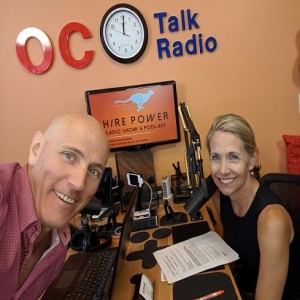
Thursday Sep 26, 2019
Thursday Sep 26, 2019
The work you must-do if you want to see innovation and growth. This work involves letting your inner kindergartner come out. Because this is when people do their best work!
This show is proudly sponsored by Vidoori
Today’s Quote:
"The Universe is one great kindergarten for man. Everything that exists has brought with it its own peculiar lesson."
- Orison Swett Marden (Founded SUCCESS magazine in 1897)
Guest Bio:
Summer Anderson is the Managing Partner of MiROR Partners. She has been spearheading executive search around the globe. With a proven track record of shaping executive-level leaders, guiding leaders to immediate clarity, and simplifying complex organizational matters, she is a trusted advisor to senior executive clients and candidates at Fortune 500 security, technology, and fast-growth companies. She is known for her solid network of long-standing relationships and as a catalyst for funding partnerships.
Today we are going to cover
- Why it is important to let your inner Kindergartner take the lead
- How to create an innovative environment
- The 3 step process to foster innovation
Why is this Important?
- When working together a group of kindergartners outperforms a group of MBA's!
- CEO- out of comfort zone. Anytime we are in default, we are not in their best selves,
- big mistakes are made outside of our comfort zone and operating in default.
- Trust on team is more attractive to everyone
- Superstar hired will stay when the environment is safe
- Curiosity, wonder, sparks innovation
To create the right environment for amazing things to happen
- Have to be willing to prep the soil
- Get minds clear enough to operate as a kindergartner.
- Being willing to empty yourself rather than fill your head with too much.
- Listening with care. I'm gonna get curious about what you said
- Squeeze all the nuances out of it
Innovation Codified
1) Build Courage: Leadership must lead with courage in order to inspire trust neither #1 or 2 will occur. If thinking differently and openly sharing ideas isn’t safe, it will never happen. The change begins with you.
2) Review Sacred Cows: Get your team to talk about the taboo topics. Examine your thinking. Get an outside party to facilitate and get to the bottom of ‘why’ things are the way they are. It’s more about thinking different. Apple was excellent about bringing this the forward. This is more about different perspectives. You
3) Add Diversity of thought. Take a long look. Is your team thinking differently? Or are you hiring just to increase your ratio of diverse team members?
Rick’s two cents
- Stay true to who you are: If you are a jerk, hire other jerks who can challenge you.
- Your best people will leave when they feel unheard
Key Takeaways:
- Be willing to look within and start with yourself
- Be willing to grow, get ready to help your people grow
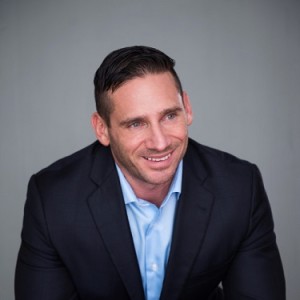
Thursday Sep 19, 2019
Thursday Sep 19, 2019
Today we are taking an honest look at your hiring record. Data does not lie!
The success or failure of your hiring is a direct result of your interview process. Everything from the messaging, the experience of the first contact through to the way the interview is conducted determines your hiring outcome. It is NOT money!!
A shift in mindset is needed to understand that people have options and your company is not as special as you think. You need to stand out. You can do this by providing growth.
This show is proudly sponsored by Vidoori
Today’s Quote:
"You have to create a track record of breaking your own mold, or at least other people's idea of that mold." - William Hurt
Guest Bio:
David Patterson is the Founder and Managing Director of The Kineta Group and TheSAPRecruiter.com, and also a member of Sanford Rose, a top-10 ranked world-wide retained search firm (Executive Search Review).
He is The SAP Recruiter, and helps CIOs, IT Execs, and Talent Acquisition Pros hire and retain the best SAP talent in the known Universe. In his 15 years as an SAP Recruiter, David estimated that he personally interviewed between 5,000-6,000 candidates for all levels to include Architect up through the C-Suite.
Show Highlights:
- Why it is important to really dissect your hiring record
- Understanding what success should look like
- Evolve your own unique process into an experience that attracts the right people
Why is it important that you take an honest look at your hiring record
Your Hiring record is the result of your interview process.
What data should be measured?
- Number of people interviewed to get to an offer
- How many people turned down your offer
- Last 10-20 hires
What a record should look like?
- Where people fell out… timing issues. The truth about taking too long, dropping the ball, the impressions you are leaving
- Self-actualization- following the pack,
- Different interview process- repel as much as it attracts. How can I scare people off? (the anti-sell) - The Crossfit sell
Rick’s Input:
- Retraction: Video interview is all good … one way video interviews- Bad Idea!
- Past performance is a key indicator of future performance
- TRUTH: Money is not the reason someone turned down your offer
- Data
- First Interview to Placement ratio
- Offers extended
- Accepted / Rejected
How do we fix a broken Hiring record?
Use the strategy to drive the message.
- Be polarizing to attract the people who love you
- The majority of people don't get what you do, the ones that do become believers
- Finding that career wound…the pain that they have become habituated too. That’s where you pivot!
- (but you need to first find those common pains that most candidates in your industry have, as well as develop the skill to elegantly bring that out in people during interviews)
Create a “Special Sauce” where you attract the people you want.
- Cult-like following. Special tribe
- Don't be afraid to repel the wrong people.
- People who are attracted to the mavericks
Assessment of why you hire the way you do.
- Not seeing all the right people out there
- Based on the job descriptions
- View on the JD flows into how to recruit
- How you onboard/retain them
Rick’s two cents:
- Understand your Candidate
- Accept that you are one of many
- Fill the gap in the person’s career
- Provide a growth road map
- Target specific people and nurture
- 4:1 Interview to placement ratio
Key Takeaways:
If you don’t want to be just another commodity employer, you need to:
- Be willing to take a step back and figure out, fundamentally, the pains, fears, and dreams that drive the people you want to hire (and recognize that you are selling a product that solves a pain)
- Be willing to draw pain and dreams out of the people you are interviewing (to see what makes them tick, in their heart)
- Be willing to be polarizing and repel as much as you attract, if not more so!
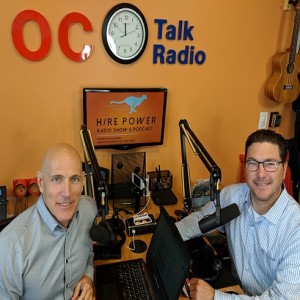
Friday Sep 13, 2019
Tapping into Veteran Talent Pools! with Brian Erickson of Vidoori
Friday Sep 13, 2019
Friday Sep 13, 2019
A lot of companies shy away from hiring veterans because they don’t understand the value that they may bring to the table.
Amazon, Google, Microsoft, Cisco & Walgreens have programs in full force but the majority of startups have yet to really get on board. The diversity in thought that comes from hiring a vet may be the competitive edge that your startup needs to propel your business ahead of your competition.
This show is proudly sponsored by Vidoori
Today’s Quote:
"We hire military veterans because they make great employees. They bring proven technical and leadership skills. They understand teamwork, and they're adaptable. Bottom line, hiring veterans is good for business."
Randall L. Stephenson - CEO of AT&T
Guest Bio:
Brian Erickson serves as the Vice President, Strategy and Solutions at Vidoori, Inc. He leads company expansion strategies bringing the Vidoori brand to the west coast. Brian has over 26 years of experience in Naval Aviation, Cybersecurity, Information Technology, Information Operations, Strategic Programs and sourcing/acquisition. Brian is a retired Senior Naval Officer (Captain/O6) with proven experience and expertise across numerous technical domains bringing a warfighters perspective to Vidoori’s mission of delivering excellence.
Brian holds a Bachelor of Arts Degree in Economics from San Diego State University, a Master of Business Administration (Financial Management) from the Naval Postgraduate School, a Master of Science (Information Technology) from the Naval Postgraduate School and an Executive Management Certification from the University of Virginia Darden School of Business. Additionally, Brian holds numerous defense and industry related certifications to include: CISSP, GSLC, CISSO, CISSM, DAWIA Level 3 PM, DAWIA Level 3 IT, CKM, ITIL.
Show Highlights:
- The benefits of hiring veterans
- Challenges in the crossover
- What is needed to hire veterans today
Why hire veterans?
- Advantages of hiring veterans
- Hard workers
- Trained
- All the same, competencies that civilians do +1
- Life experience
- Much harder workers, disciplined
Why do companies not hire veterans?
- Language Translation - understanding of Military terminology
- Skills Mismatch -
- Negative Stereotypes / Bias - too rigid, formal, chain of command
- “Alpha” mentality
- Aggression / PTSD / disability fears
- Cultural Fit
- Fear of future deployments
Rick’s Input:
- Military ranking & conditioning
- Diversity in thought
- Requires a shift in mindset
- Impactful behavior transfers
How to Successfully hire Veterans
Preparation is Key!
- Process & Structure
- Checklist oriented
- Understand rigidity in the government process
- Outline the Framework, Training & Direction
Rick’s two cents
- Embrace the differences in Mindset
- Seek to understand the mindset
- More important to have a structured interview process
Key Takeaways:
- Have an established interviewing team that works well together; bring in a technical “ringer” as required to round out the depth and breadth of conversation.
- Hire military...highly technical, lots of experience, trustworthy, bang for your buck
- Transactional vs relational (stick with relational)
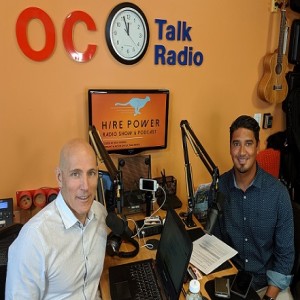
Thursday Sep 05, 2019
Thursday Sep 05, 2019
Have you ever looked at a resume and thought this person is perfect! Only to find out after you have hired them that the person is a total mismatch to your organization. This is the result of being “Shopping Hungry” for the hire.
This is totally avoidable! By keeping the interview process consistent regardless of who the person is, where they came from you will serve you well!
NEEDING to fill a seat is not enough evidence to warrant making a hire!
Today’s Quote:
"If you take shortcuts, you get cut short." - Gary Busey
Guest Bio:
Kevin Castle is the Managing Partner and Co-founder of Technossus. He is responsible for motivating and leading an organization of technology experts who are laser-focused on exceptional client outcomes.
A highly engaged entrepreneur, Kevin has driven the Company’s strategy and supported the expansion of Technossus’ footprint from one office in Irvine to three worldwide. The firm has been recognized three times by the Orange County Business Journal (“OCBJ”) as one of the best places to work and four times by INC 5000 as one of the fastest-growing companies in America.
Show Highlights:
- The pitfalls of being “shopping hungry”
- How to avoid this pitfall
- A process to cure being shopping hungry
What is “Shopping Hungry” for last-minute hire? Why does this happen?
- Challenge - at the time you need to hire someone, you scramble to find them, make a hasty decision and do not go through all the of the checks and rigor to make sure they are the true long term fit and strategic hire for you
- Short cut the interview process
Why is it important not to shortcut the interview process when hiring?
- Hiring the right culture Fit
- Challenge - you hire someone who has the skills, knowledge, experience - but fails to make sure that they are the right culture fit. Hard to deal with, hard to get them out, and often can have a lasting impact of damage made with internal and with external people who interact with your company.
- Personal - hired someone that was not rooted in the same values - meaningful relationships, trust, sincere kindness.
Rick’s Input
- The purpose of the interview… The Truth!
- Short cuts get cut short … like the quote
How do we solve this problem?
- Acknowledge that you were the culprit of the mistakes made
- Solution - spend 5-10% of your week passively recruiting. Meet key persons, spend time networking and reaching out to people to learn more about background, desires. When you need to bring someone in, then a couple of friendly calls can get you moving quickly. Networking with people who may know other people like you may hire is a key strategy to get some great referrals
- Side benefit - a great way to get market aware (can teach you a lot). Also helps to give you a broader breadth of the skills in the market for the position.
- Solution - be clear
- Important - to only hire people that represent your values
- Trust your gut
- Incident - several years back. Hired someone that I just knew was not going to work well. Did not click with me, and could not get through and understand why. I could not articulate what it was that made us not connect. The team was ecstatic in interviewing this person, all thumbs-up, and ultimately hired this person.
- What happened - It completely did not work out. Had to let them go and nobody was happy in the end. Did not get the job completed, trust was an issue from the start, had to let them go.
- Important - to click with the people who work for you. To start off with a genuine interest in someone is critical for them to be successful.
Having to let someone go who is loved by all - but is not performing
- Solution - having metrics-based performance tracking - we have this @ every single level in our organization - where goal setting, outcome, performance can be quantified - at times this ends up having to trump likability which is very difficult for people, companies, for us all.
- Have specific questions around the culture.
Rick’s two cents
- Performance-based metrics.
Key Takeaways:
- Passive recruiting- Network 5-10% of your time
- Cultural alignment matters
- Trust your gut

Thursday Aug 29, 2019
Thursday Aug 29, 2019
We have all experienced it….Trying to coordinate calendars to accommodate an interview. It is a BIG time suck from someone’s day!
How to eliminate some of the administrative tasks and shift into more productive work that moves your business forward.
Today’s Quote:
"There's a lot of automation that can happen that isn't a replacement of humans but of mind-numbing behavior." - Stewart Butterfield
Guest Bio:
Olivia Melman leads DigitalOcean’s Recruiting Operations team, having joined the company as the People team’s first Program Manager in March 2017. In addition to managing the Recruiting Coordinators, Olivia is focused on automation and collaboration within the full-cycle recruitment process, and owns all data and tooling associated with recruitment strategy. She also manages DigitalOcean's external partnerships with talent acquisition and branding vendors, and runs point internally on headcount planning alongside the FP&A team. Olivia started her career in Financial Services as an HR Management Analyst, and most recently, was a Customer Success Manager for LinkedIn’s Talent Solutions business.
Show Highlights:
- The issues around Calendar management
- The challenges with just coordinating & scheduling interviews
- Solution to optimize your interview calendaring issues
What are the challenges in scheduling interviews today?
My team’s responsible for coordinating interviews -- at a really high volume (averaging 200 hires a year), but the challenge we’ve run into is really how to maximize time in meaningful ways.
- Limited interviewer availability and limited candidate availability -- coordinating calendars effectively becomes really difficult
- 70% of my team’s days are spent browsing Google calendars to schedule interviews (more specifically, onsite interviews where we are bringing candidates in to meet several people from our hiring teams)
- Interview scheduling ties to candidate experience, employee experience (hiring teams) and the experience of those on my team (it’s frustrating staring at Google Calendar all day!)
Why is it important?
- Time spent where people are not contributing their maximum potential/value to the team -- once you’ve mastered how to schedule, you don’t learn from each instance
- At this kind of junior level role, it’s important to me that my teams gaining relevant experience beyond the task at hand (scheduling) -- and is in fact as an operations leader, I need them to gain system implementation experience -- program management and change management experience so that I can effectively delegate down the road
- (personally, I want to make sure that everything my team is doing is contributing to their individual growth and development).
- Navigate gaps- communication upfront
Rick’s Input:
- Always one person- have an alternate
- A bench of back-up dancers (interviewers)
How do we solve this problem?
- Using a new technology platform to automate interview scheduling and eliminate the “calendar Tetris” of trying to schedule onsite interview panels / back to back interviews.
- The tool essentially enables the user to build the interview panel or team (select interviewers, interview duration, format, location -- set times) and then the tool does the work for us by using AI to pull in Google Calendars and find time slots where the selected interviewers are available back to back and for the assigned formats/durations.
- Cut to 40% of the time using system administration skills rather than scheduling role (30% time savings)
How did we go about finding a solution?
- Discovery and assessment -- figuring out exactly what the workflow looks like now (in terms of people, process, and systems)
- People -- do we have the right people executing? Who are the stakeholders? Is that who they should be?
- What activities are these individuals working on that isn’t adding value? For example, what is being executed that doesn’t bring 1) learning 2) development or maybe 3) revenue or however YOU define value for your org
- Let’s break out those individual activities we identified and first, look internally to solve with automation (an example where we did leverage internal resources was with a web-based candidate resource library -- so that we could stop attaching docs to every email and updating links in a zillion place, just have one link do.co/candidates)
- If nothing internally available, then go to market to see what external vendors or technology partners exist
- Vendor selection: Speak to DO philosophy on vendor selection (simple and elegant, ability to inform product design, contribute to vendor success) → this led us to Interview Schedule!
Rick’s two cents:
- Standardize a process where anyone can step in
- Assign questions to each person in the process
- Evaluate based on the company values
- Pre-schedule days for interviews
Key Takeaways:
- People, process, then systems -- nothing will work if you don’t have the right people in place
- Implementation -- making sure you think through user adoption and change management
- Metrics for success -- any time you are investing in automation ($$), making sure you have a clear vision for what success looks like
